“It would enlarge the power of doing good, augment the facilities of business, swell the population, give spirit and vivacity, cause a union of exertion, contribute to diminish jealously, increase happiness and prosperity and produce efforts salutary and desirable.”
From the 1846 Petition to change the existing Hartland – St Albans Town Line in the Village Area
*
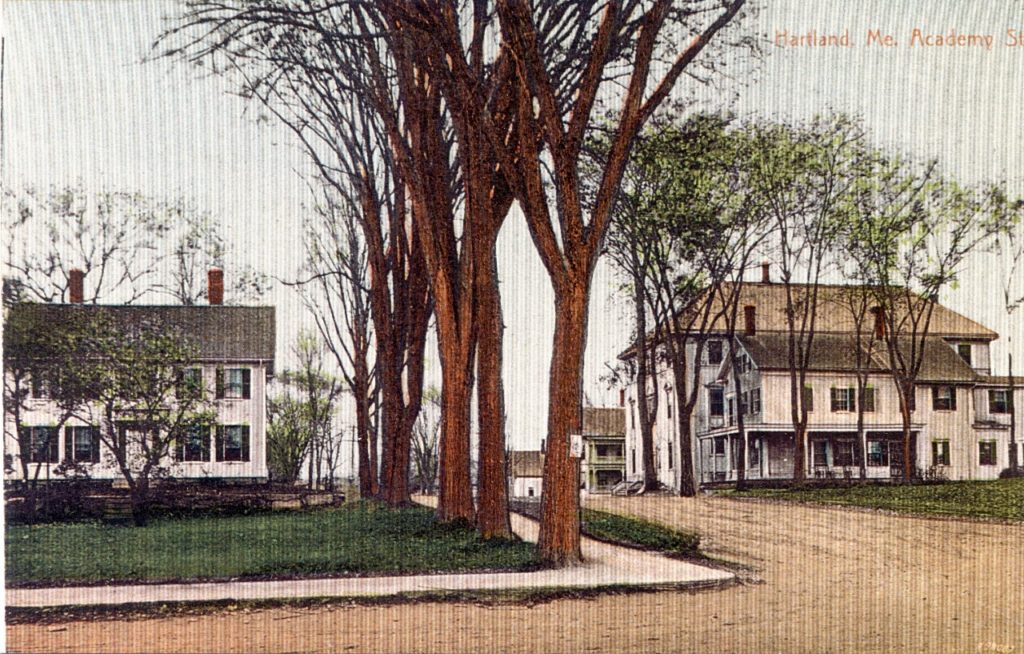
Academy Street
*
Currently, no maps of Hartland detailing the locations of homes, businesses and merchants before 1860 have been discovered. Various documents provide us with enough information to know many existed in its early years of settlement, but most of the specific details of when they were built or by whom remain unknown. The following is based on our best interpretation of known maps, town records, census data, historical book references, photos, artifacts and family genealogical information. Updates will be made as new information is discovered.
*
All of the Academy Street area, as well as much of the future Hartland Village area, was originally part of the future town of St Albans when it was purchased by William Moor of Goffstown, New Hampshire. Moor first came to explore the area around 1796 after St Albans was first surveyed as Township No. 5 in the 4th Range north of the Waldo Patent. Moor’s expansive lot stretched along both sides of the Sebasticook River and remained part of St Albans when it incorporated at a town in 1813.
This edited close-up of the original map surveyed by Samuel Weston in 1798 is rotated to a north-south perspective and highlights the original existing borders at the time of future towns surrounding Moor’s Lot S-17. Since Weston’s primary assignment was to survey St Albans and Palmyra, there were some obvious omissions on his map of Great Moose Lake bordering Hartland and Harmony and only a partial inclusion of its Sebasticook River outlet. Hartland’s original surveyed southern border with the L of Palmyra and the Gore of the Mile and a Half Strip are also highlighted. (See Maps page for further details)
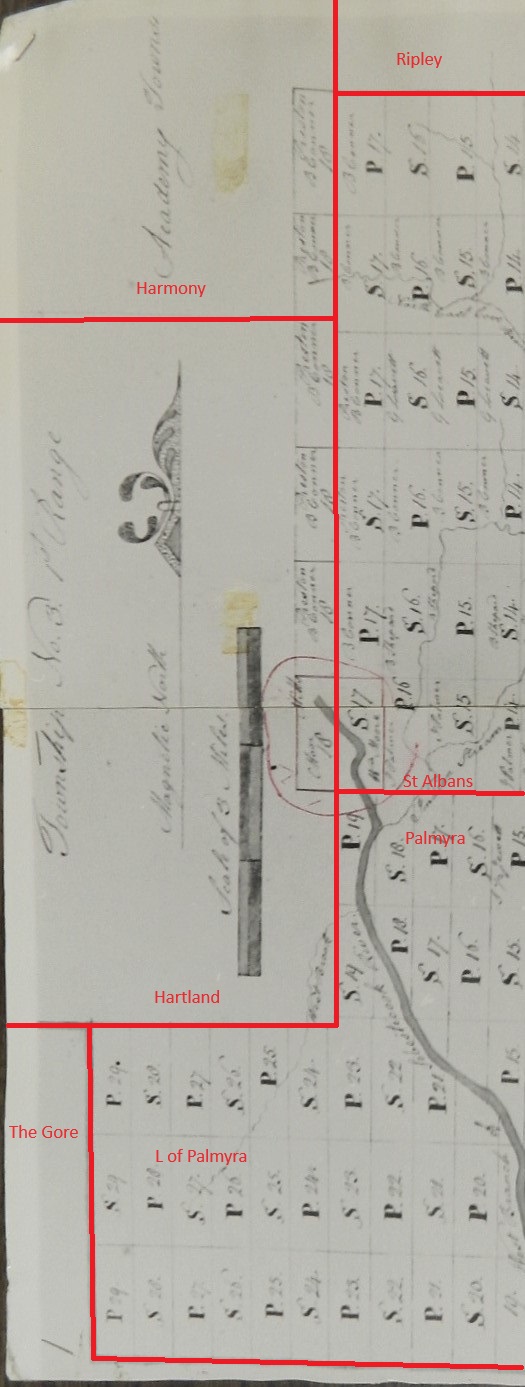
Edited Map of William Moor’s Lot S-17 location in Township No. 5 – 1798
*
For further visual reference, Moor’s entire Lot is highlighted below as it would have existed on a future map of the village area in 1883.
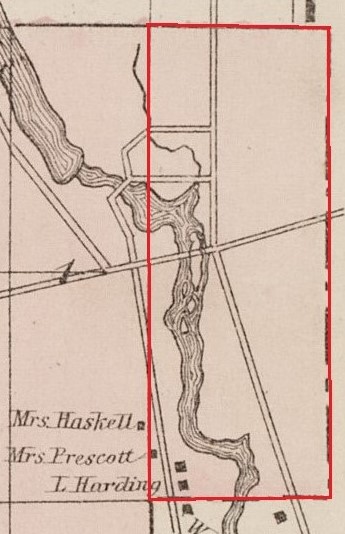
William Moor Lot Location Reference
*
Academy Street likely took its name after the then St Albans Academy was founded in 1832. Records from Corinna indicate it was part of the first road system commissioned by Dr. John Warren around 1804 to connect his 4 Townships of Hartland, St Albans, Corinna and Palmyra which were surveyed and constructed under the guidance of Samuel Lancey of Palmyra.
*
It would take until 1846, and several debates among citizens of both towns, before the current borders of the village area between Hartland and St Albans were finally established following a petition presented by inhabitants of St Albans living on the western side of the village area to the Maine State Legislature. The petition noted the existing borders cut up the village, made it difficult to properly tax and made schooling a problem. It ended by stating the proposed line change, “Would enlarge the power of doing good, augment the facilities of business, swell the population, give spirit & vivacity, cause a union of exertion, contribute to diminish jealously, increase happiness & prosperity and produce efforts salutary and desirable.”
On August 7, 1846, the Legislature formally approved an Act to again alter some of the Hartland and St Albans town line on the eastern and a part of the western side of the village reading in part as, “From and after the passage of this act, all that part of the Town of St Albans, in the County of Somerset, which lies west of Lot Numbered Sixteen, in the First Range of lots in said Town of St Albans, be, and is hereby set off from said Town of St Albans and annexed to the Town of Hartland in said County.”
As seen on this illustrated future map of 1883 as reference, the majority of this annexed land was William Moor’s entire original Lot Seventeen which had since been divided into multiple properties. Also included was a small section of land to the west of Moor’s lot bordering the Sebasticook River which had been previously annexed from Hartland to St Albans in 1821.

Hartland Village following 1846 Land Annexation from St Albans
*
Hartland Village Borders with St Albans & Palmyra from the 1860 Somerset County Map.
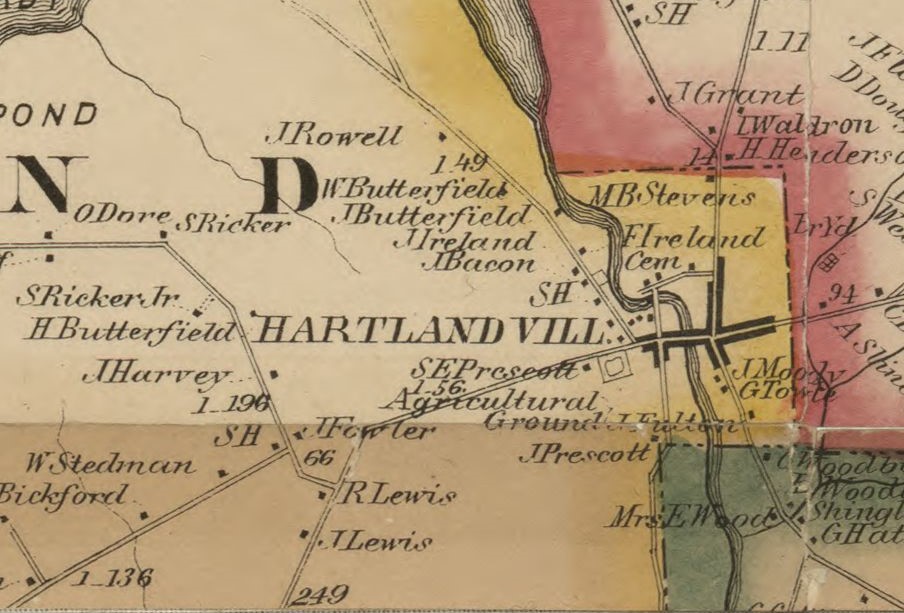
Hartland Village – 1860
*
Building dates of homes present on Academy Street by 1860 are unknown but undoubtedly several existed early in the settlement of the area.
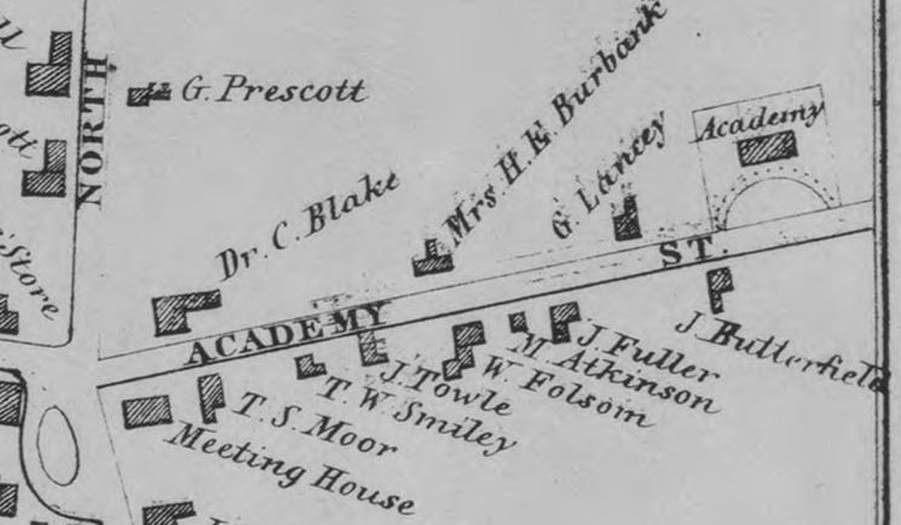
Hartland Village – 1860
*
Known occupants of the houses along Academy Street as noted above in 1860 include:
Northern Side:
Dr. Calvin Blake and his wife Louisa (Haskell); sister of Peleg Haskell who lived on Commercial Street
Harriet (Blake) Burbank; daughter of Dr. Calvin Blake & Louisa (Haskell) and widow of Augustus Jedediah Burbank
George Lancey, Jr and his wife Frances (Blake); daughter of Dr. Calvin Blake & Louisa (Haskell)
Hartland Academy; the new brick building built in 1856
Southern Side:
Thomas S. Moor; he moved to Bangor in 1860
T. W. Smiley; currently unknown
J. Towle; currently unknown
W. Folsom; currently unknown
M. Atkinson; currently unknown
James Fuller, Jr; he owned the house but resided on Elm Street. Former Hartland Academy building moved in 1856
John Butterfield, Jr; son of John Butterfield & Margaret (Moor) who lived on Pleasant Street
*
The oldest known photograph of Academy Street comes from an original stereoscopic photo taken from the Baptist Church Steeple about 1877. Many of the homes from the 1860 map are seen including the Thomas S. Moor residence in the foreground and Hartland Academy in the background.
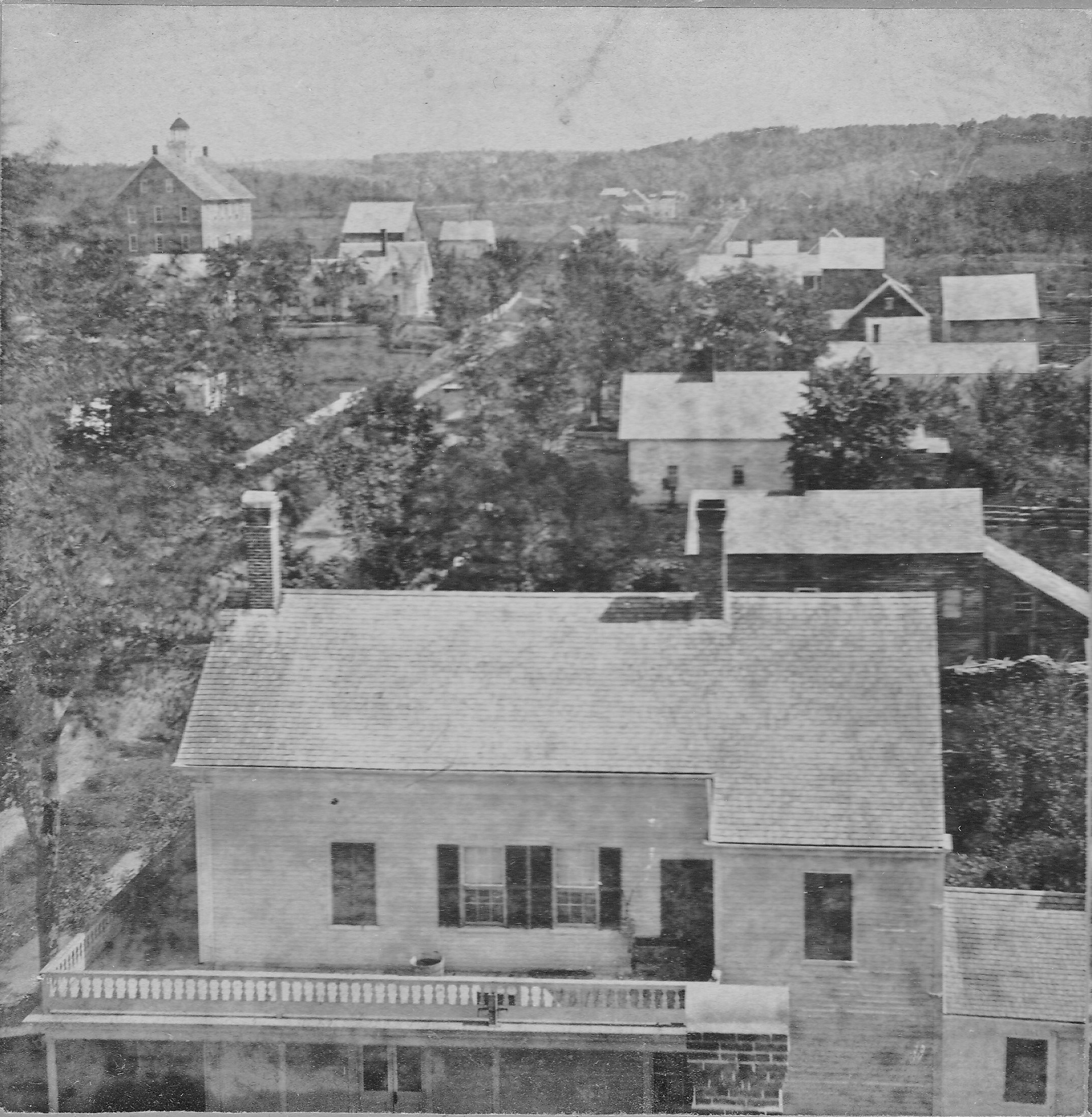
Academy Street from Baptist Church Steeple – c1877
*
Dr. Calvin Blake (1798-1870) arrived in 1825 to begin his 45 year medical practice in the Hartland area. Dr. Blake owned a large parcel of land on Academy Street in what was then St Albans where it is likely he built his first home before moving further down the street. By 1860, George Lancey, Jr was living in the house following his 1856 marriage to Dr. Blake’s oldest daughter, Louisa Blake.
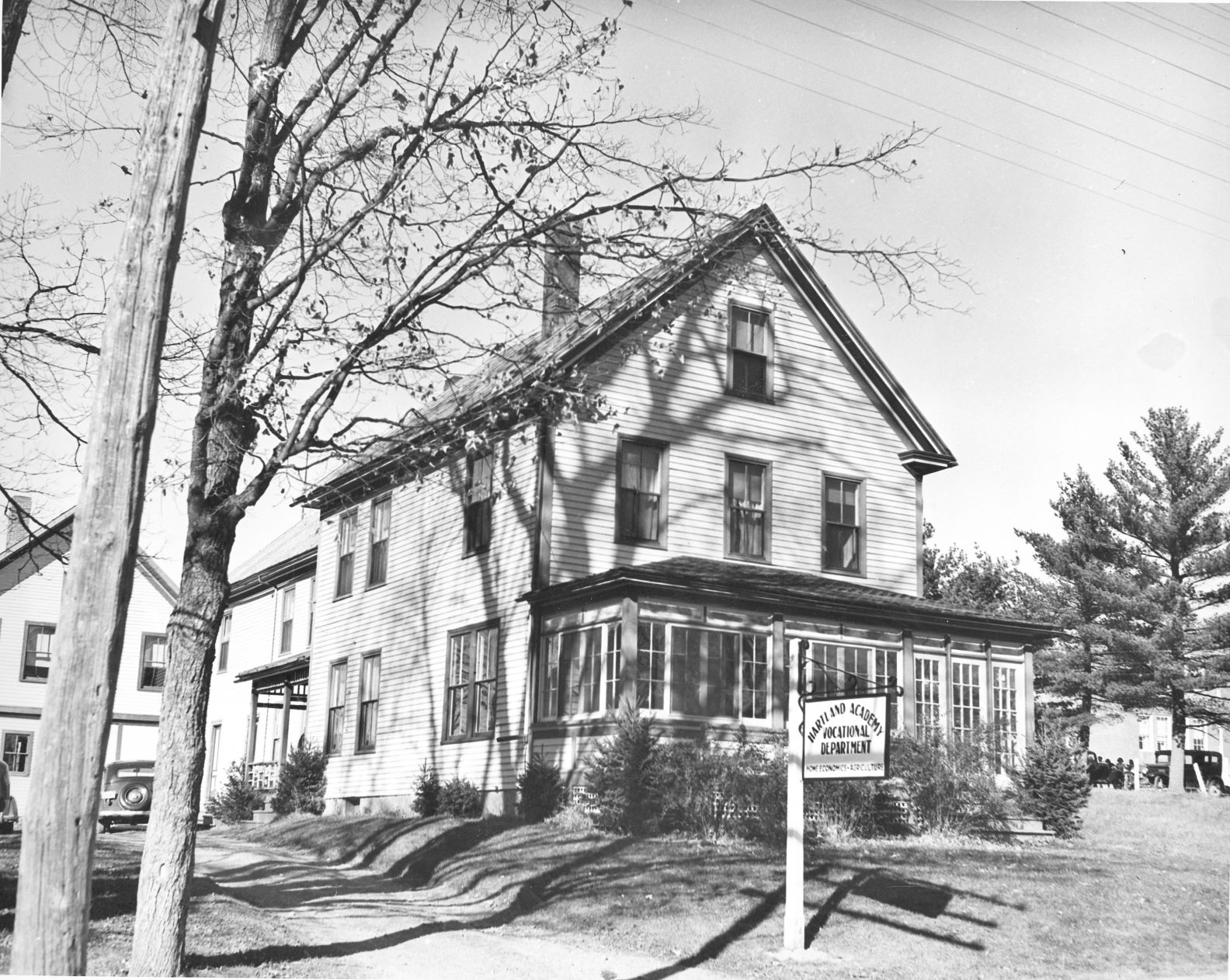
Former George Lancey, Jr Residence as Hartland Academy Vocational Department – 1940s
*
Dr. Blake’s large lot ran alongside the future Academy location and extended back behind Commercial Street as far back as the St Albans line. An 1892 entrance from Academy Street eventually became Blake Street and another portion off Blake Street was sold in 1903 to become Seekins Street. The lot is noted in 1883 after being inherited by his son, Calvin Blake, Jr who made the land sales.
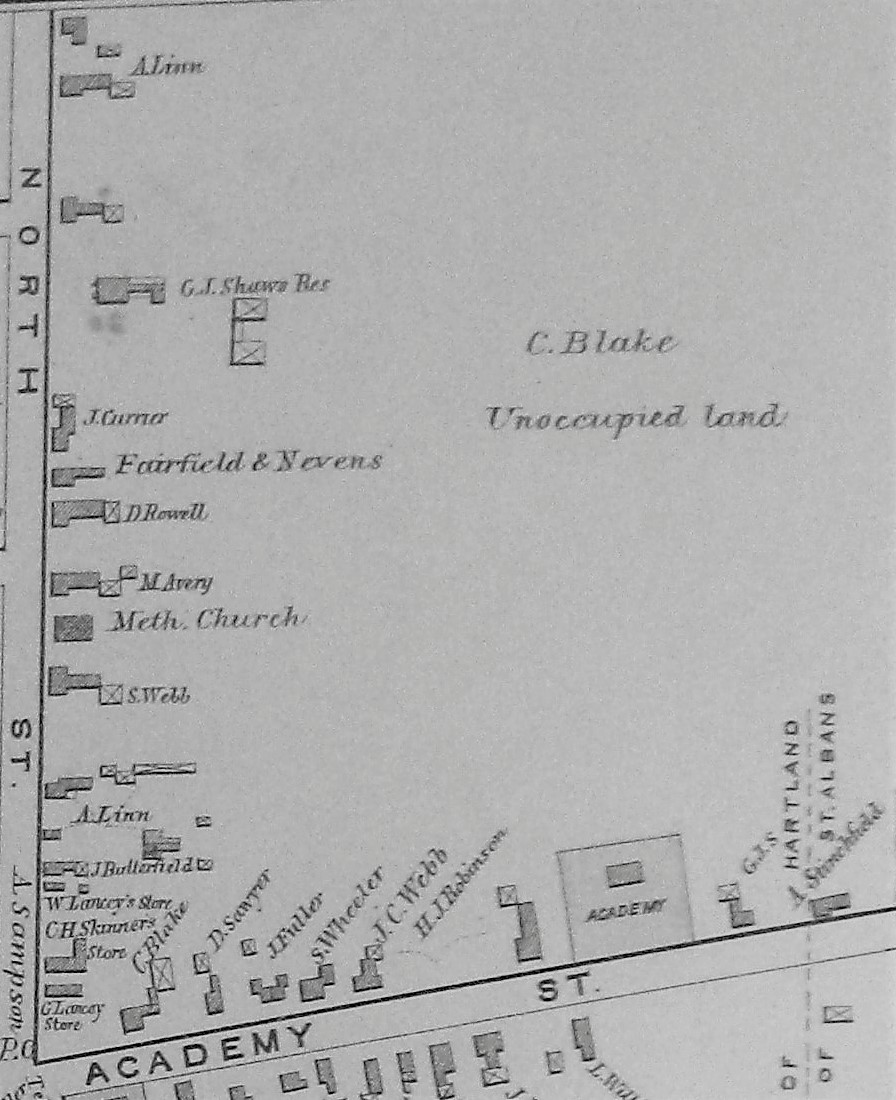
Former Dr. Calvin Blake Property – 1883
*
Chartered in 1832, Hartland Academy’s first temporary schoolhouse was located at the future Albion Keith Libby Homestead then know as the Stafford’s Mills Homestead. The homestead was still part of St Albans at the time which is why Hartland Academy took its original name as St Albans Academy. A new wooden schoolhouse was built soon after in 1834 at the current location of the future familiar brick structure built in 1856.
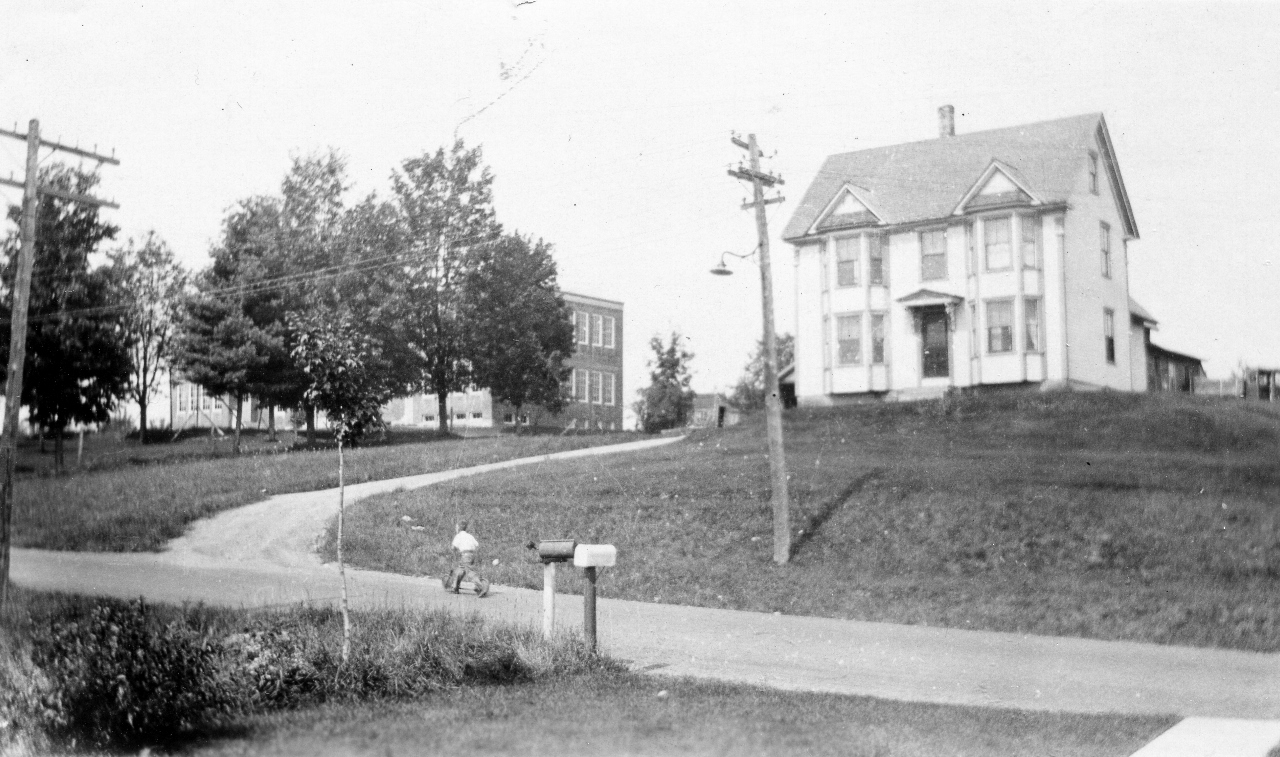
Former Albion K. Libby Homestead – 1940s
*
In 1856, the wooden schoolhouse was sold and moved onto Academy Street and a new brick building to house the Academy was built at its current location at a cost of $3,500. As noted in an article of its history in the 1932 Ripple Yearbook, “It was a commodious brick building containing a well equipped high school and grammar school.”
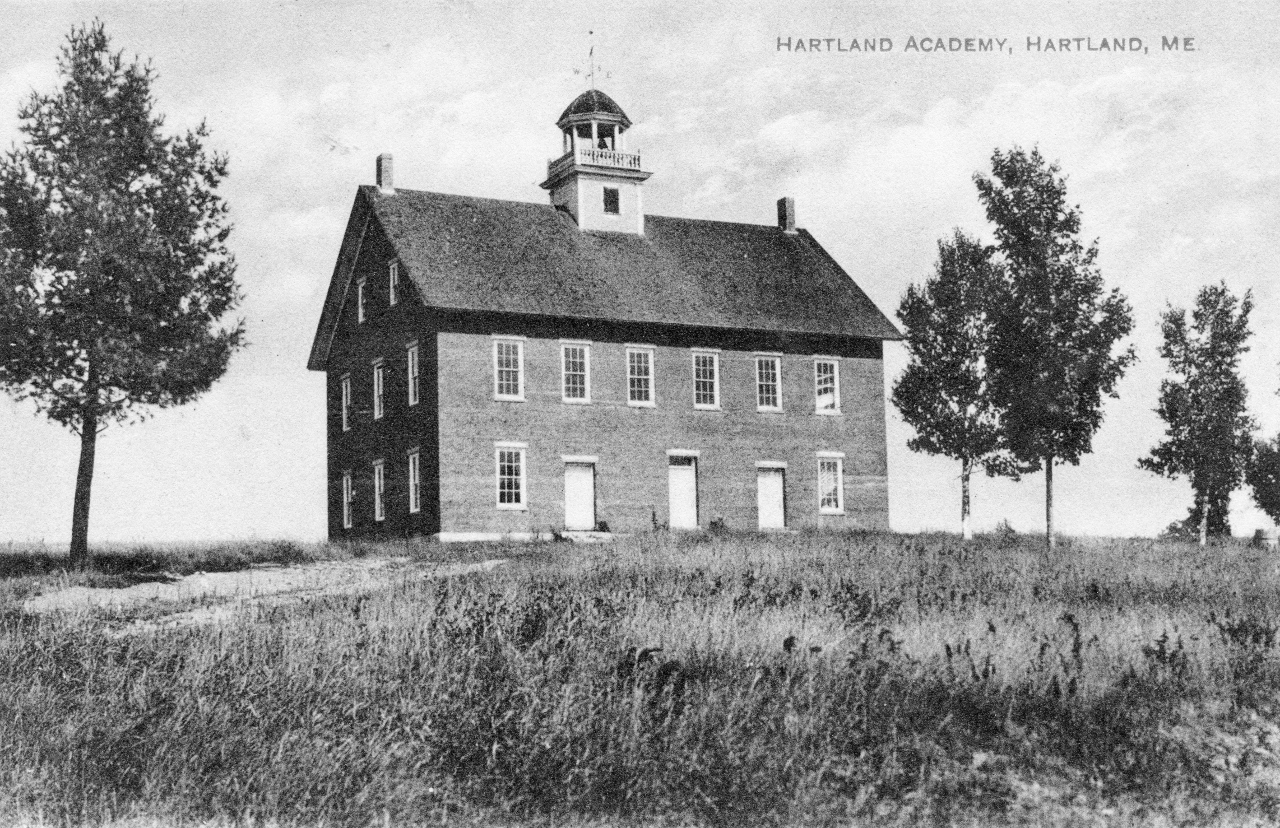
New Hartland Academy – c1900
*
By 1860, Dr. Calvin Blake had built his new home further down Academy Street near the corner of Commercial Street.
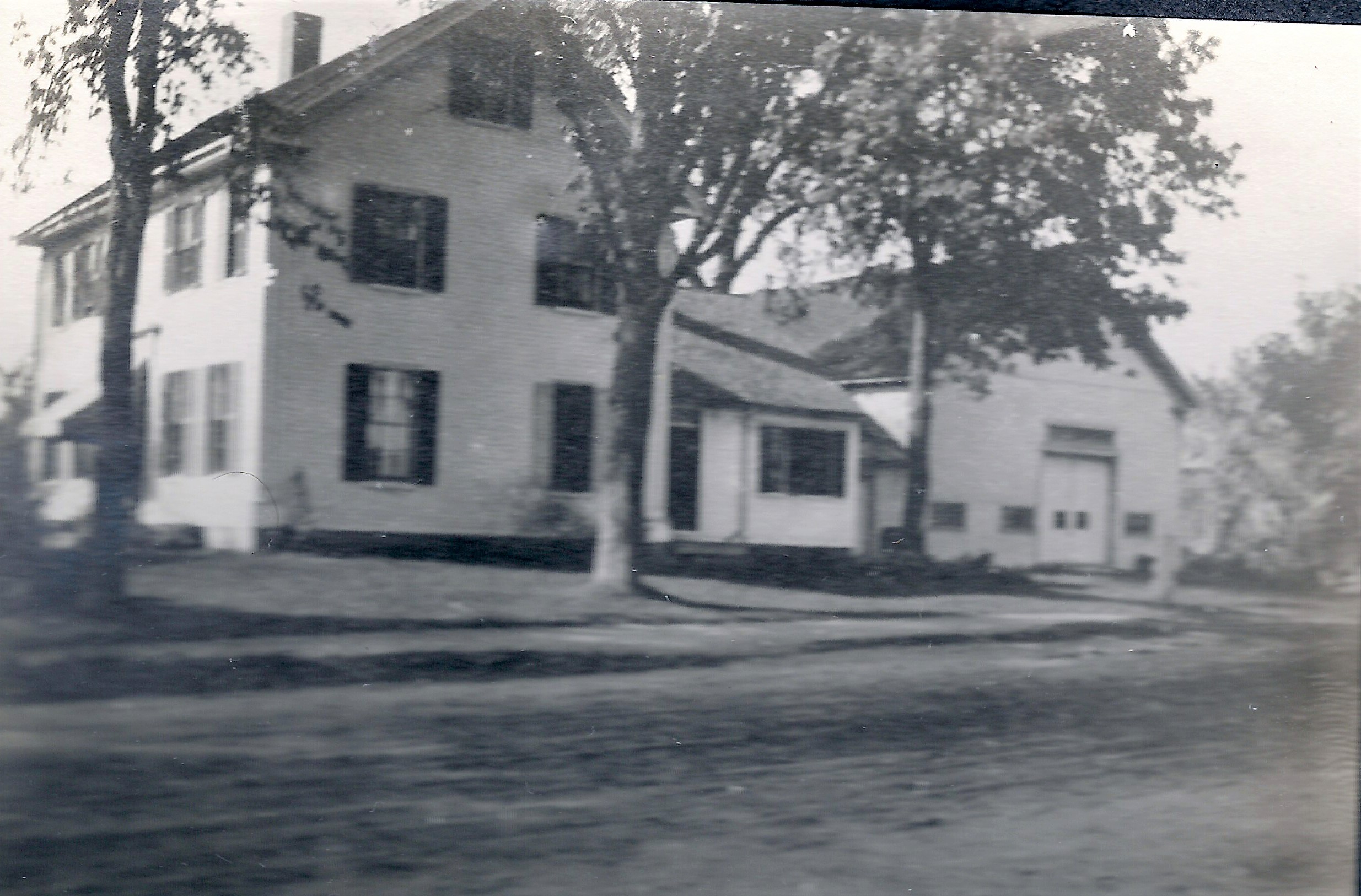
Former Dr. Calvin Blake Home
*
The Pennell Homestead also existed by 1860 appearing to be the former J. Towle Homestead. Jason Pennell and his family moved into the house by 1880 living there until his death in 1910. His son George D. Pennell and his wife Georgia Parkman remained there until George’s death in 1927. Several families would occupy the home including the Boulanger Family and Killam Family in the 1960s until the building burnt.
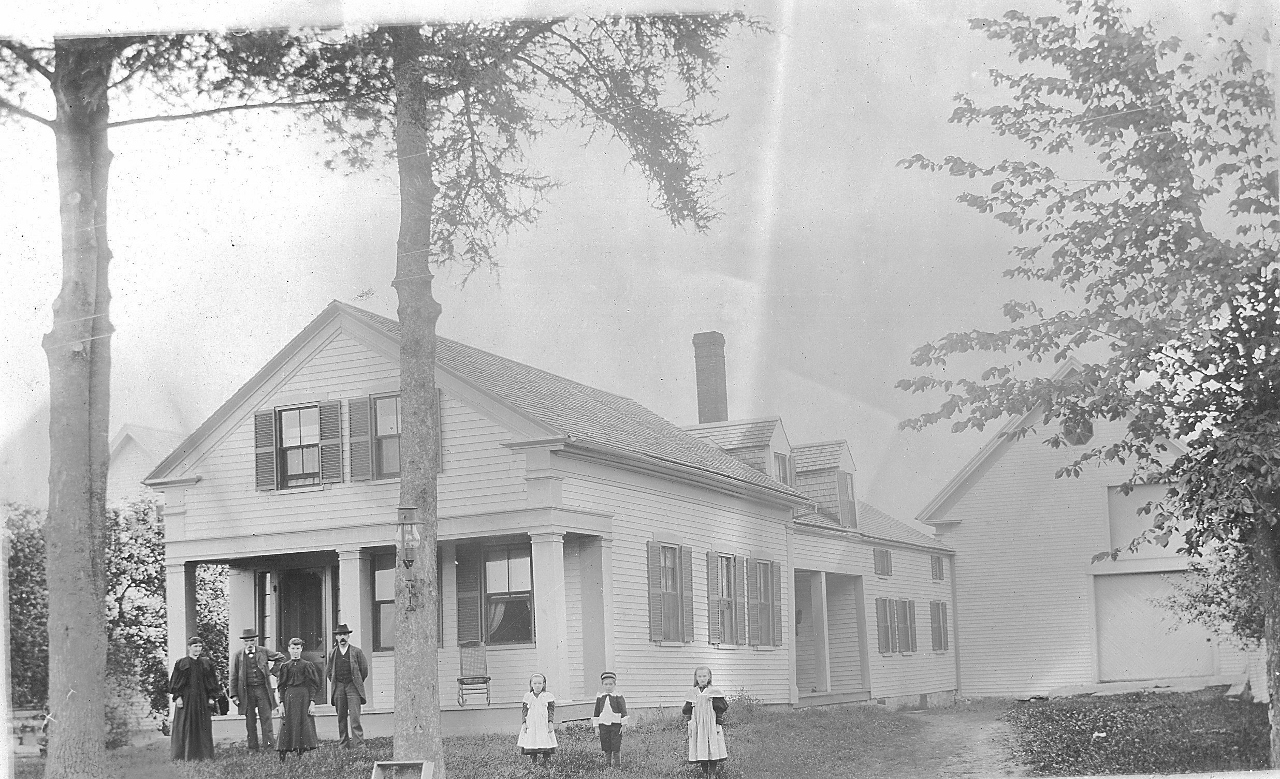
Pennell Homestead – c1900
*
Following his father’s death in 1870, Calvin Blake, Jr (1837-1905) and his wife Jeanette Turner took over his father’s home on Academy Street.

Former Dr. Calvin Blake Residence
*
Archibald Linn purchased the former T. W. Smiley Homestead where his nephew William Linn, Jr (1852-1903) eventually lived. William had come to Hartland from Scotland with his father William Linn, Sr and his 5 siblings in 1864 where he married Luella Green of Wilton in 1878. They raised 6 children at the Academy Street homestead while he worked for his Uncle Archibald at the Linn Woolen Mill as a Foreman until his death.
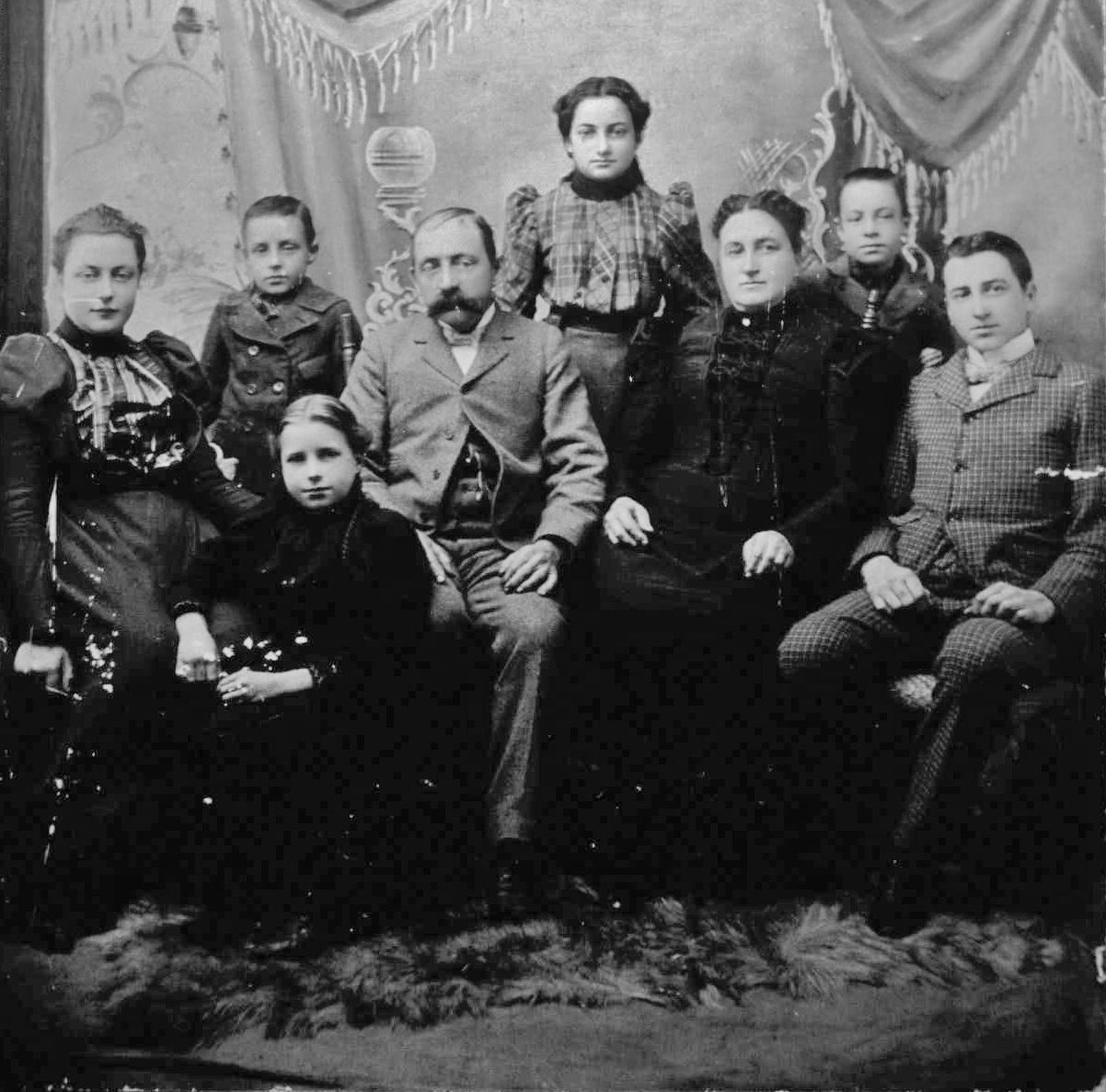
Linn Family Portrait – c1895
Front Row: Elizabeth, Eunice, William, Bertha & Albertus
Back Row: Otho, Luella & Willis
(Photo courtesy of Joan Joy Tibbetts)
*
Ownership had changed but most of the houses from 1860 still existed by 1883 with several new homes built along the northern side.
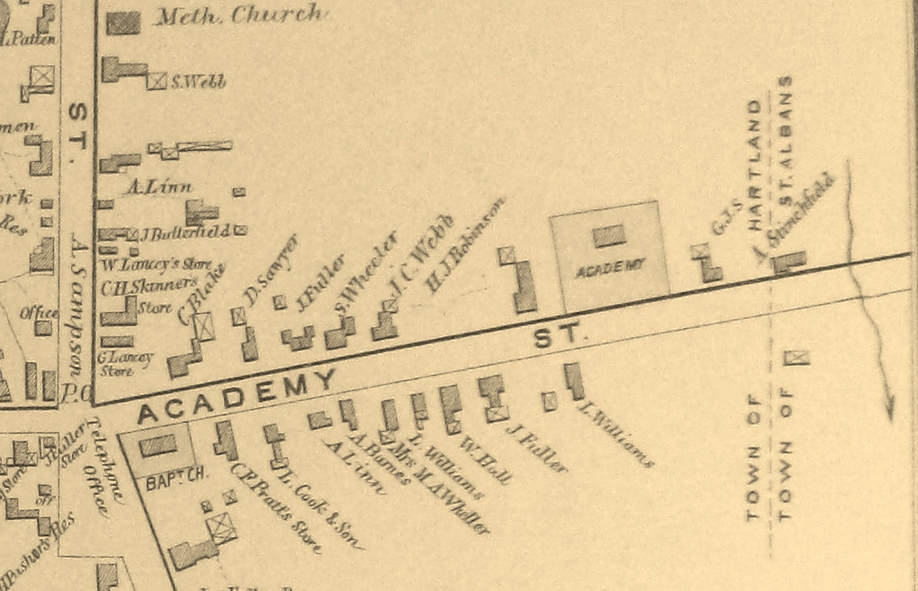
Hartland Village – 1883
*
A detailed description of the former George Lancey, Jr house owned by Henry J. Robinson at the time was provided in an 1887 ad.
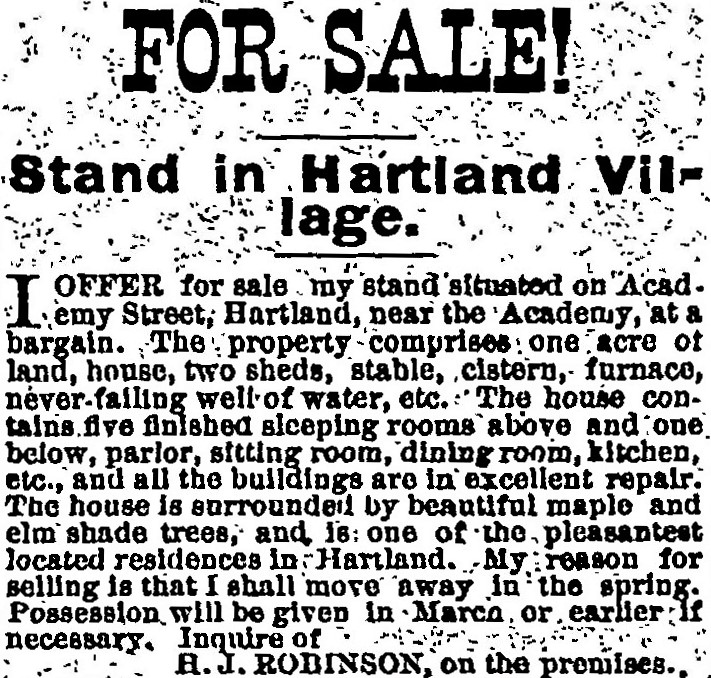
Pittsfield Advertiser – January 13, 1887
*
About 1892, Thomas Archibald Linn (1855-1914) and his wife Clara Isabelle Osborne purchased land from Calvin Blake, Jr and built their new house on Academy Street with the common entrance to the house from their driveway which extended back along the length of the house. Although the house’s facade faces Academy Street, its detailed history is included on Blake Street which was soon extended from their driveway entrance in 1896.
Thomas is a son of Archibald Linn & Grace Wilson and was one of the Linn Heirs operating the Linn Woolen Mill following his father’s death in 1889 along with his brother-in-law Henry Clay Fuller, husband of Mary Isabelle Linn, who was President of the company at the time and his brother Robert Wilson Linn, Sr.
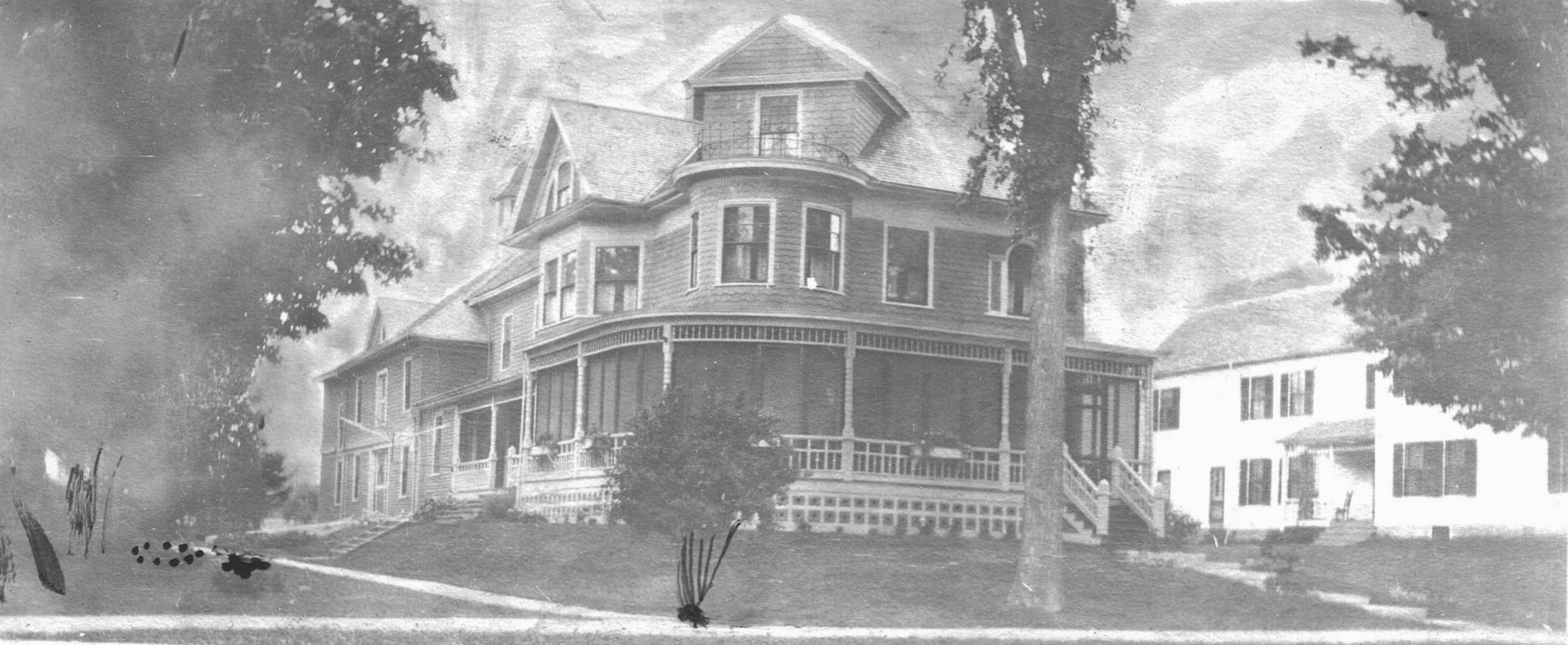
Former Thomas A. Linn Residence (Left) & former George Lancey, Jr Residence
*
In 1892, the Hartland Town Hall & Opera House was built only to be completely destroyed by fire a few years later in 1897 and rebuilt in 1898.
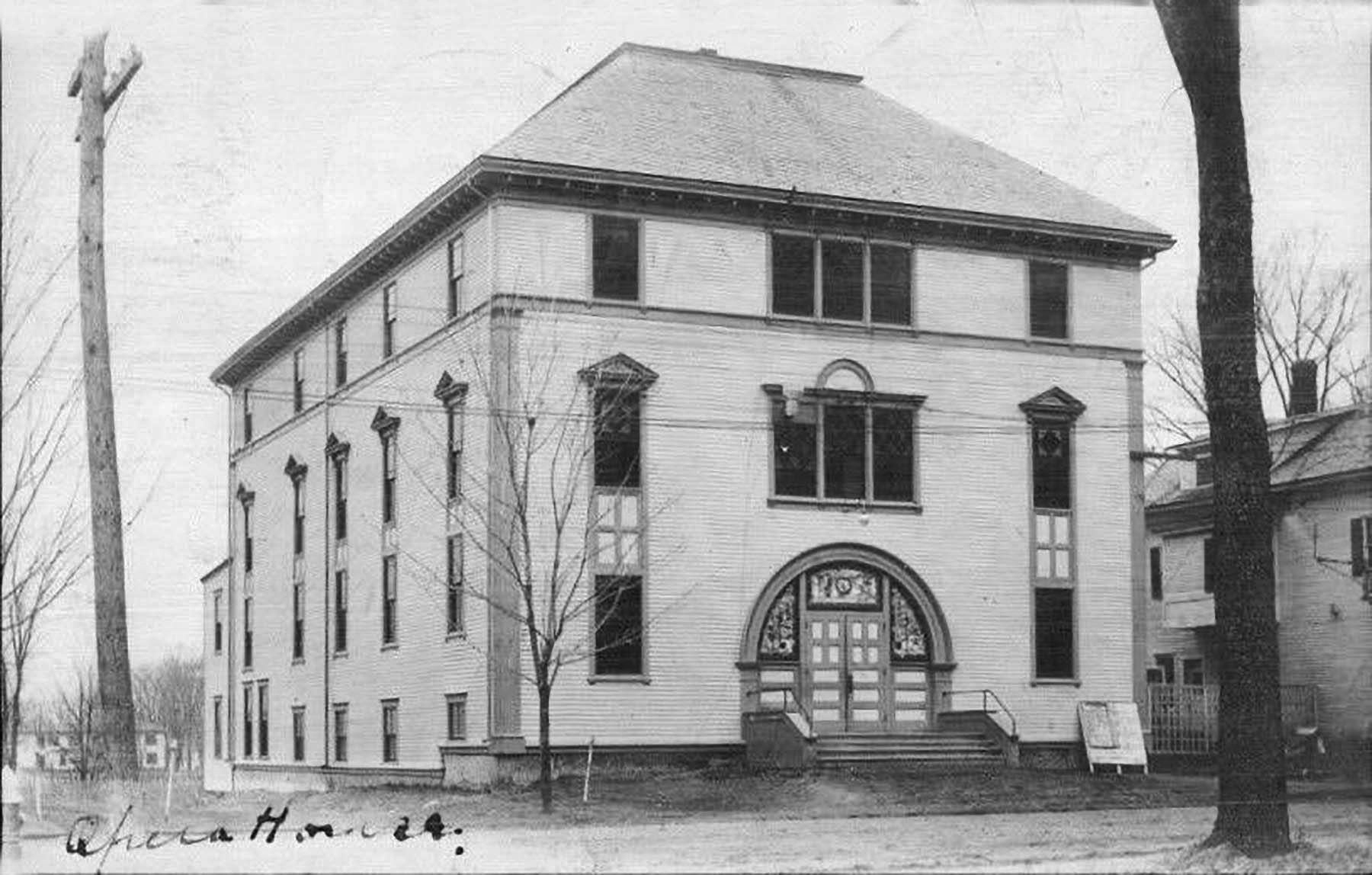
Hartland Opera House-Town Hall on Academy Street after 1898 rebuild
*
At the 1897 Town Meeting, the people of Hartland voted to accept an updated list of names for streets in the Village. Most of the streets retained their original names at the vote including, “From said (Warren) Square to the St. Albans Town Line going east; Academy Street.”
*
The former Thomas S. Moor residence was purchased by Civil War Veteran Charles Frank Pratt (1843-1913) who moved to Hartland from Bangor soon after the war ended where he married Hartland native Mary Woodbridge (1847-1913) in 1872. They lived upstairs while he operated “C. F. Pratt’s Dry Goods & Groceries” on the first floor for some 35 years.
In late 1900, Charles leased the space to V. C. Bowman of Pittsfield who operated a clothing store there for a short time. Around 1910, Attorney William Lewis Anderson of Hartland established his law office in the building as seen on the sign in the photo below before he and his family moved to Oregon in 1918. Charles & Mary are interred together at Ireland Cemetery.
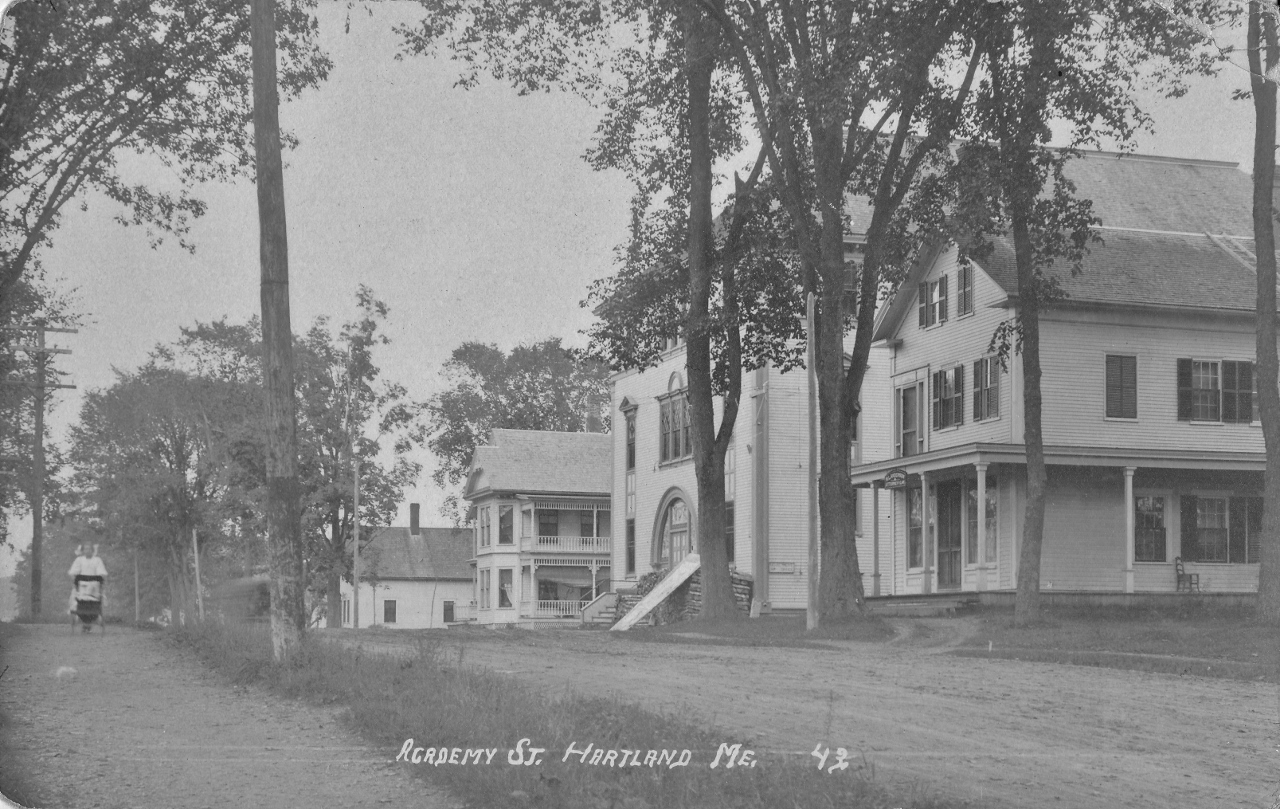
Former C. F. Pratt Residence & Store, Opera House/Town Hall & former Lyman Cook Residence
*
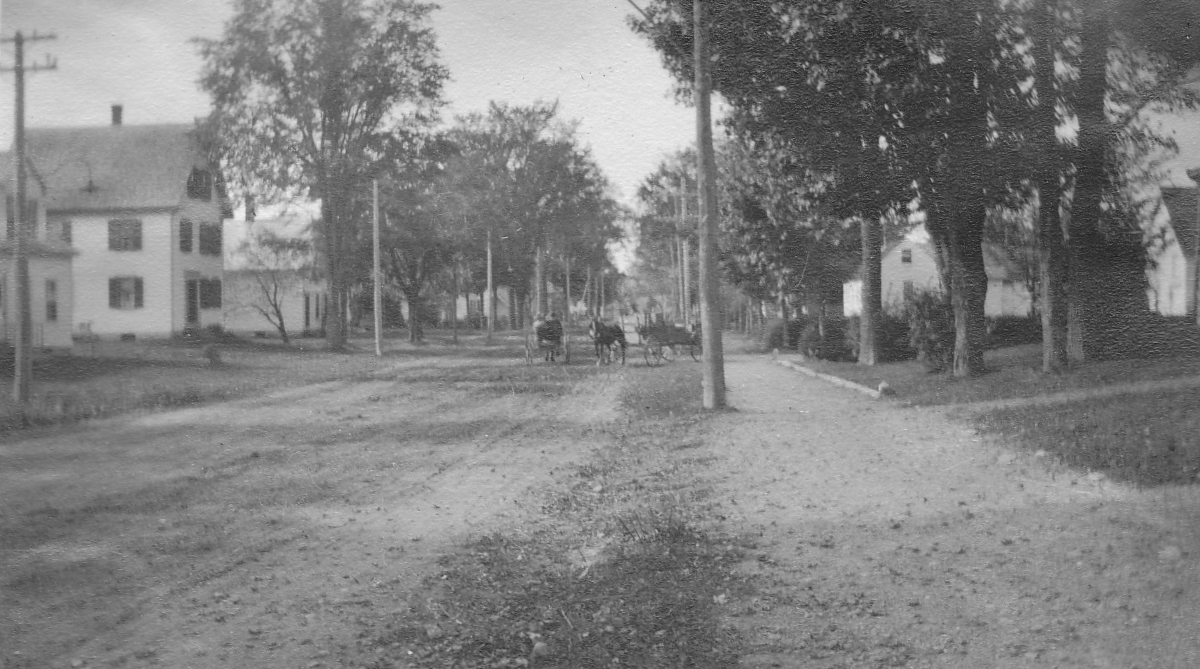
Looking down Academy Street from Blake Street
*
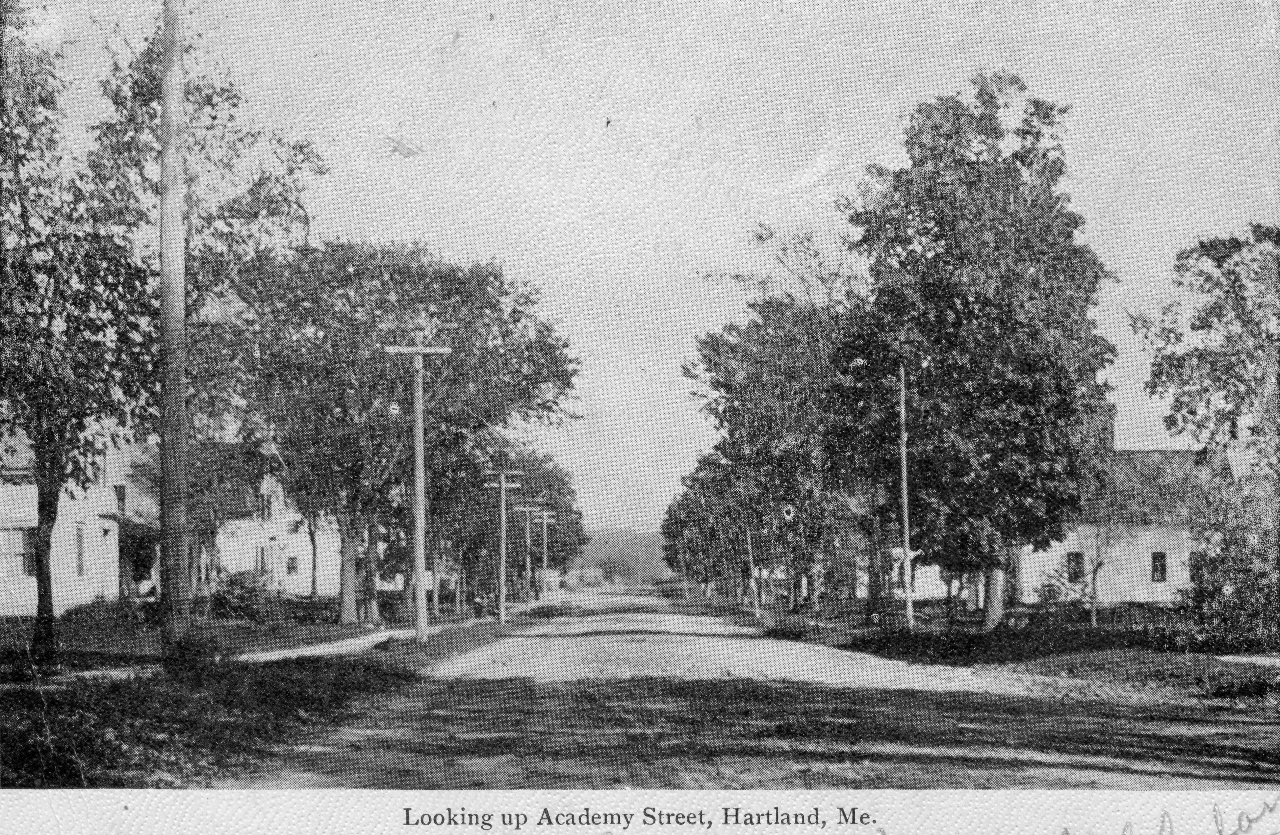
Looking up Academy Street from Town Hall
*
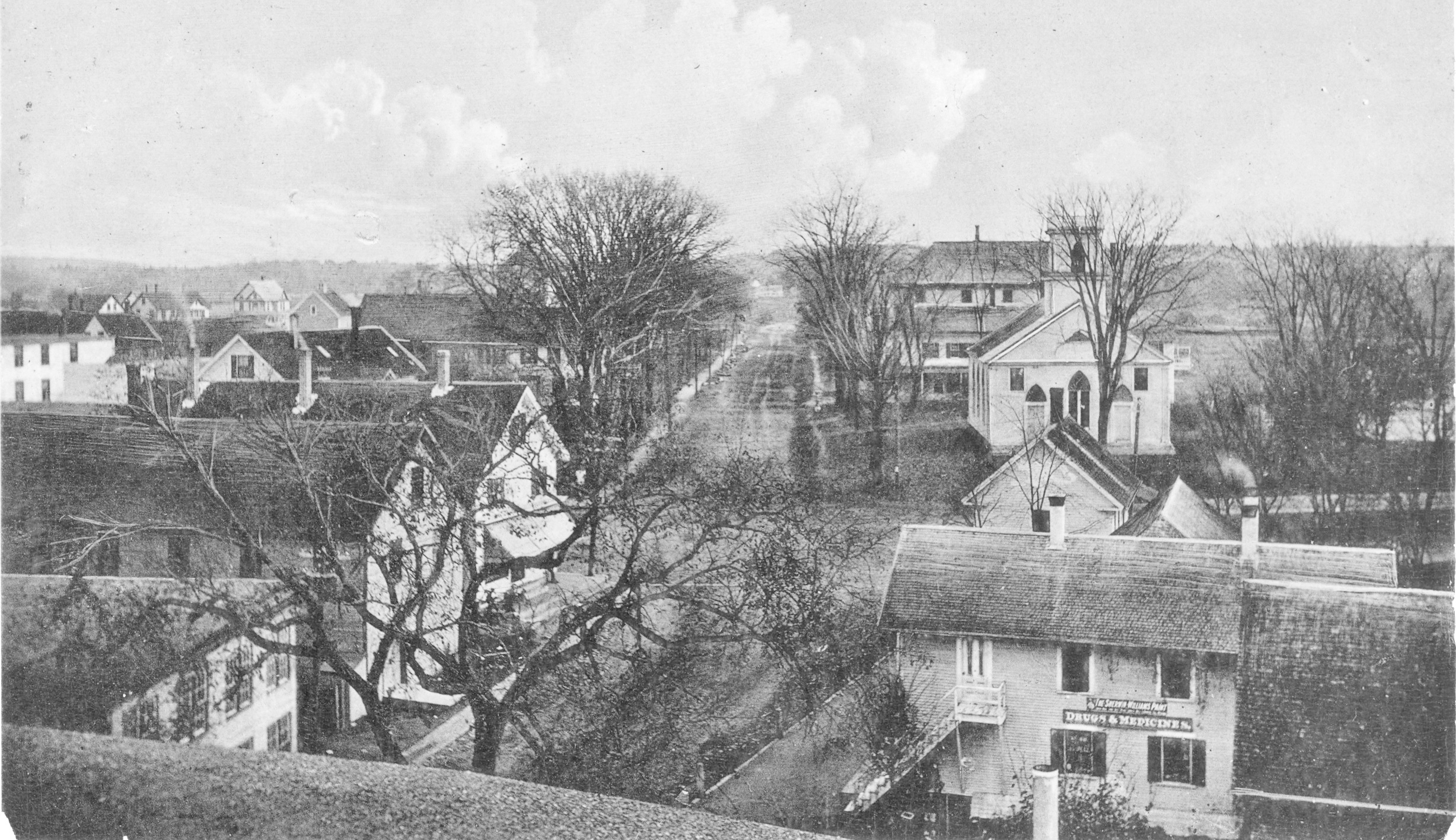
Looking up Academy Street from the roof of the new Linn Woolen Mill – c1910
*
A massive fire at Hartland Academy on December 7, 1923 reduced the building to a brick shell.
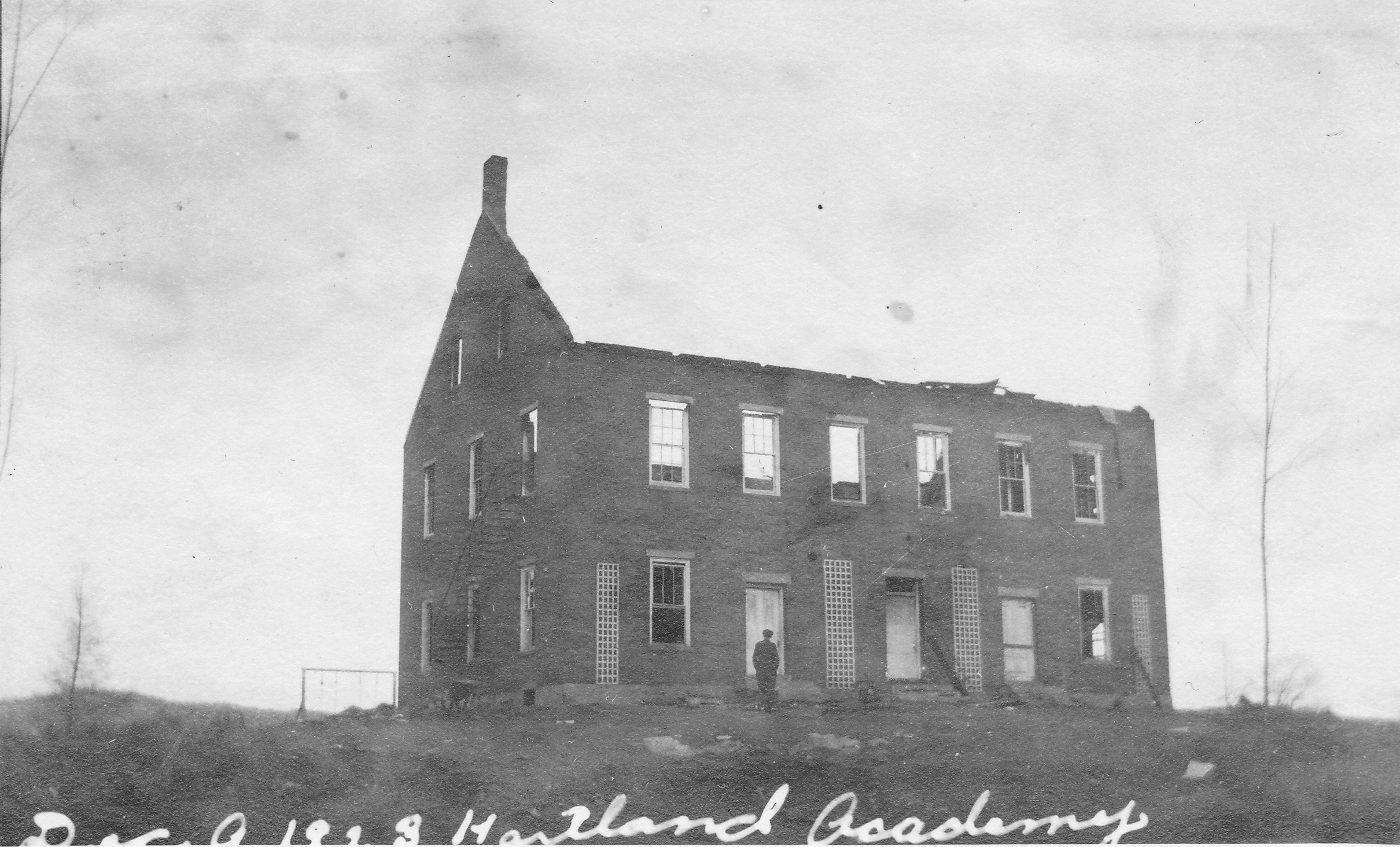
The remains of Hartland Academy following the fire – December 9, 1923
*
Within a year, Hartland Academy was rebuilt using the original facade as its center and reopened to students in the fall of 1924.
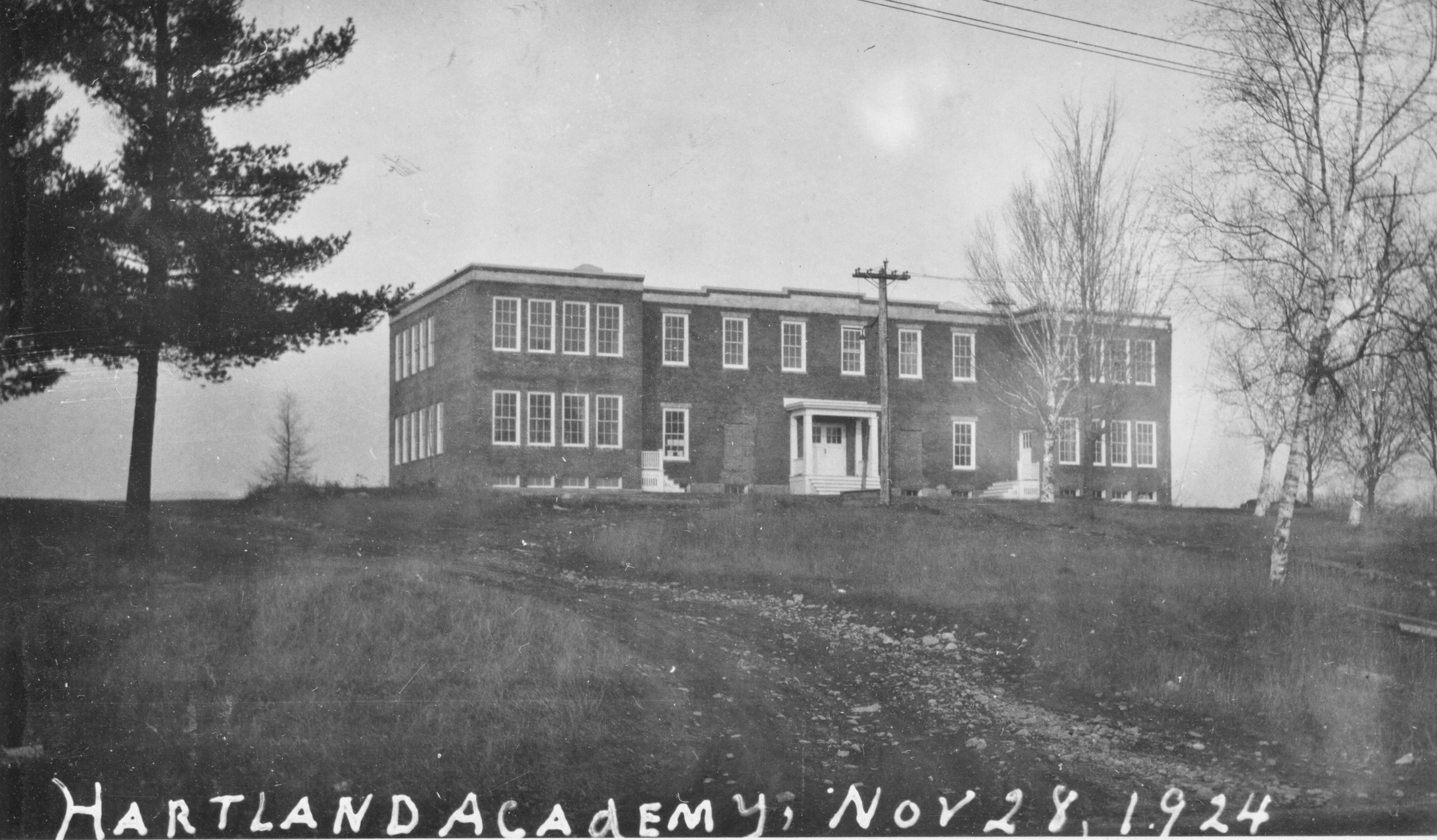
Rebuilt Hartland Academy – 1924
*

Baptist Church, former C. F. Pratt Residence & Store, Opera House/Town Hall and former Lyman Cook Residence
*
Following the death of Calvin Blake, Jr in 1905, his widow Jeanette Turner remained living at their home until her death in 1915 with her sister-in-law Hattie Blake. In September of 1920, Calvin’s nephew George M. Lancey sold his Commercial Street store block and moved into the Blake house with his wife Annie Linn and the youngest of their 2 daughters Ardis Lancey. George’s mother Frances Blake, who married George Lancey, Jr, is an older sister of Calvin Blake, Jr.
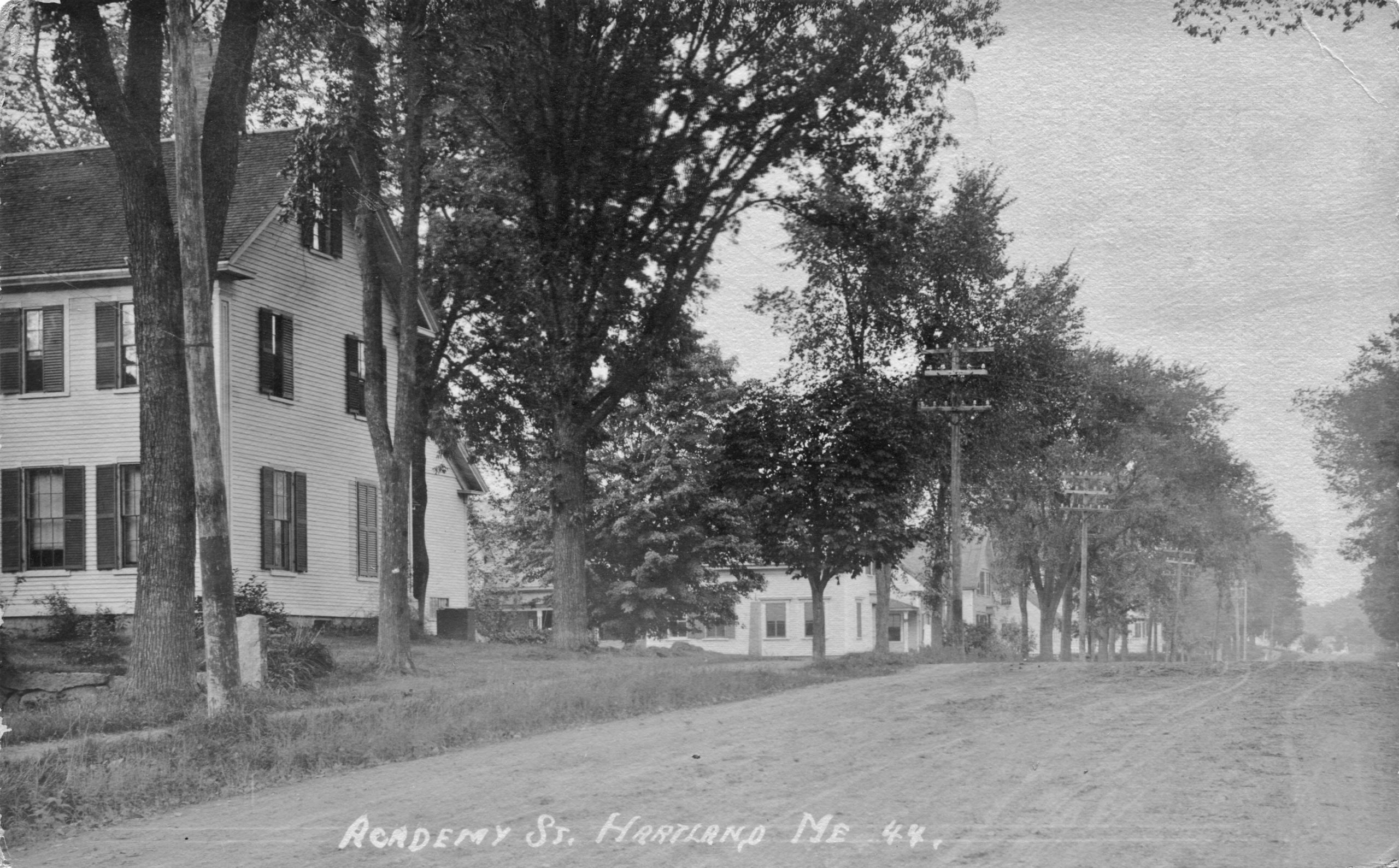
Former Dr. Calvin Blake Residence (1st house)
*
The streets of Hartland began getting tarred in the early 1930s with Academy Street among the first streets to be paved.
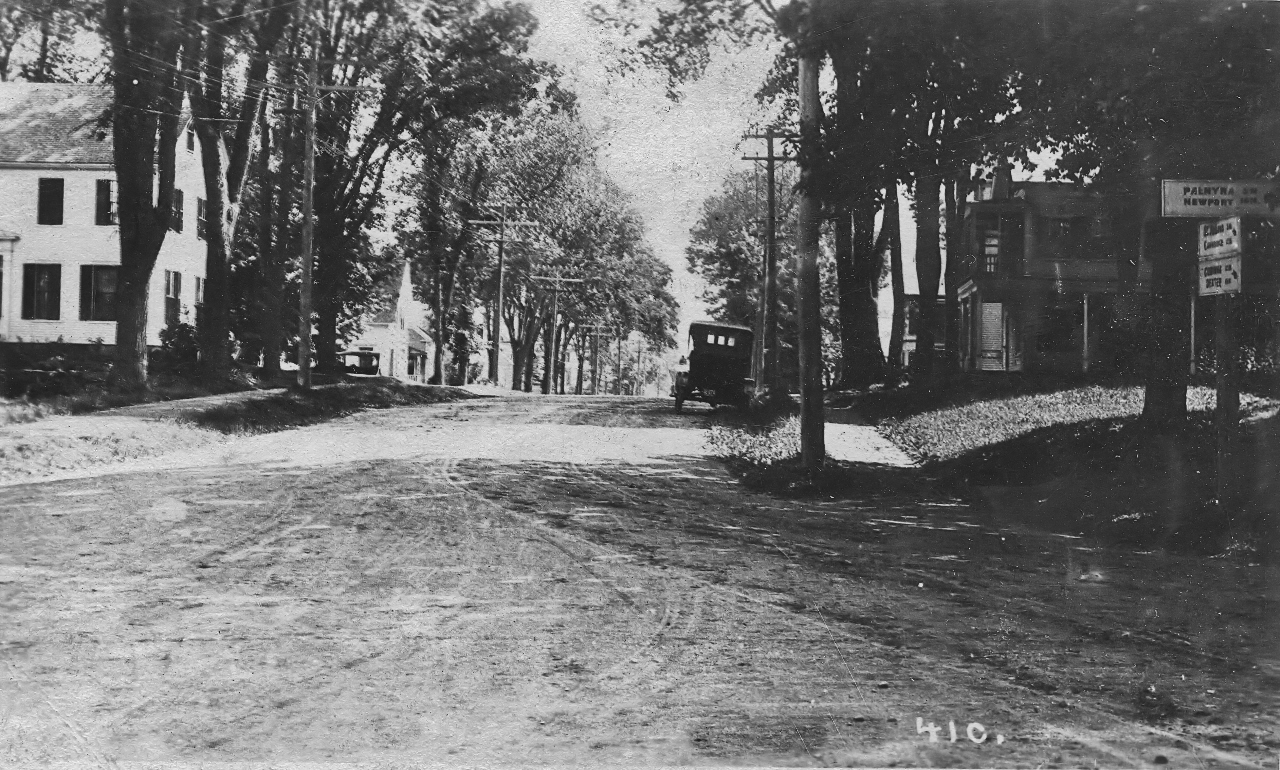
Academy Street before paving from the corner of Elm Street – c1930
*
Ownership of Academy Street properties in 1943.
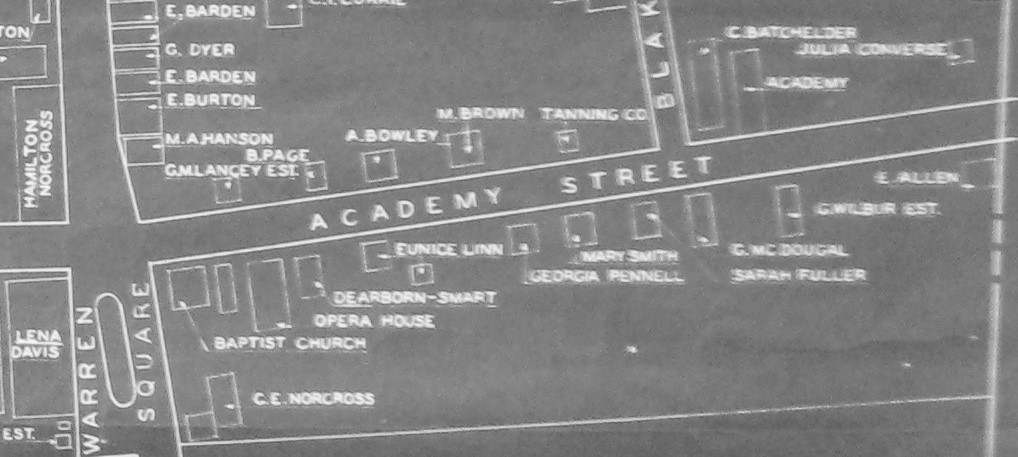
Hartland Village – 1943
*
Following the death of George M. Lancey in 1942, Lewis H. Barden (1876-1960) purchased the former Dr. Calvin Blake home living there until his death when his daughter, Laura Saville Barden and her husband Donald R. Crummett took over the house.
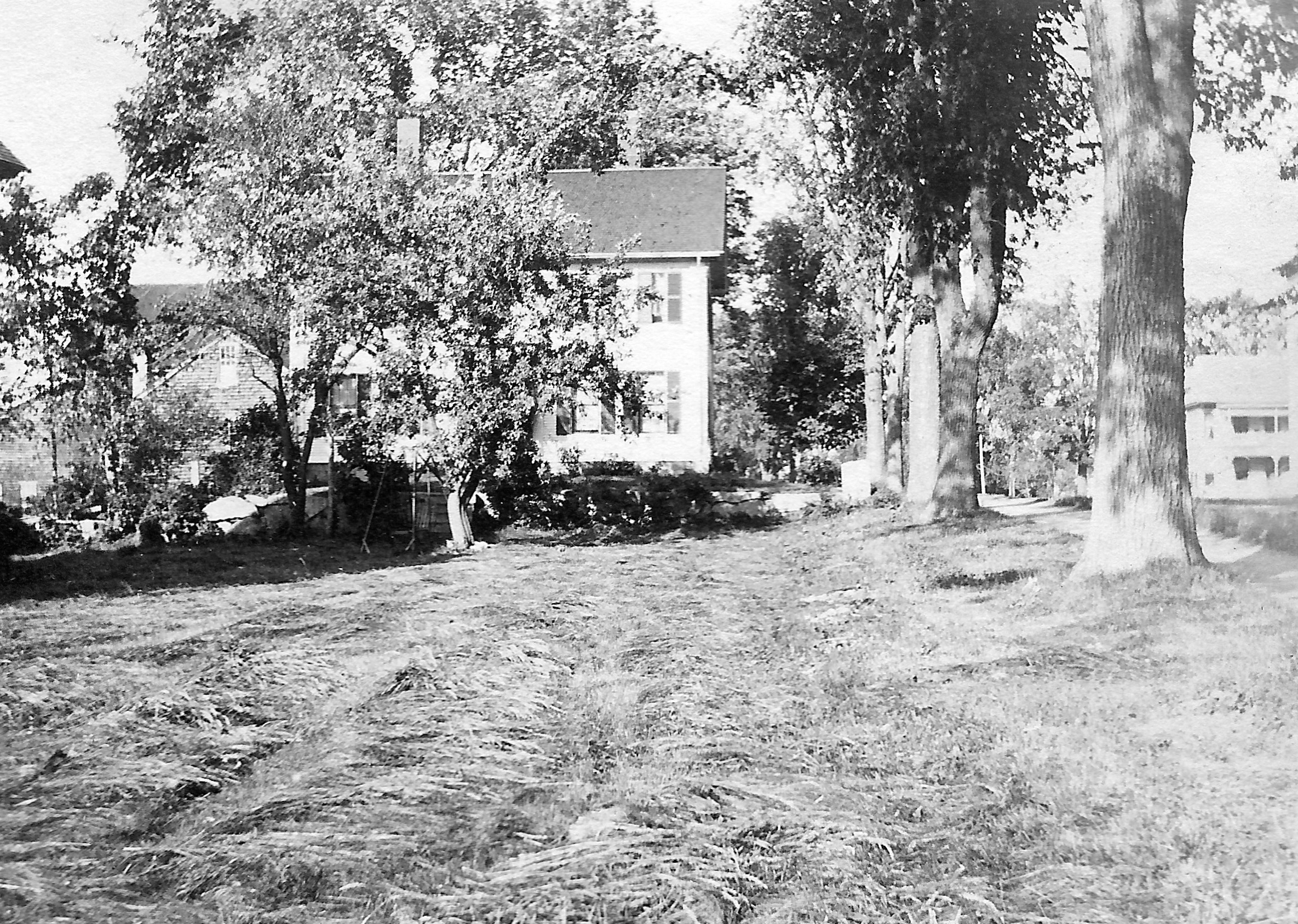
Former Dr. Calvin Blake Residence from Commercial Street
*
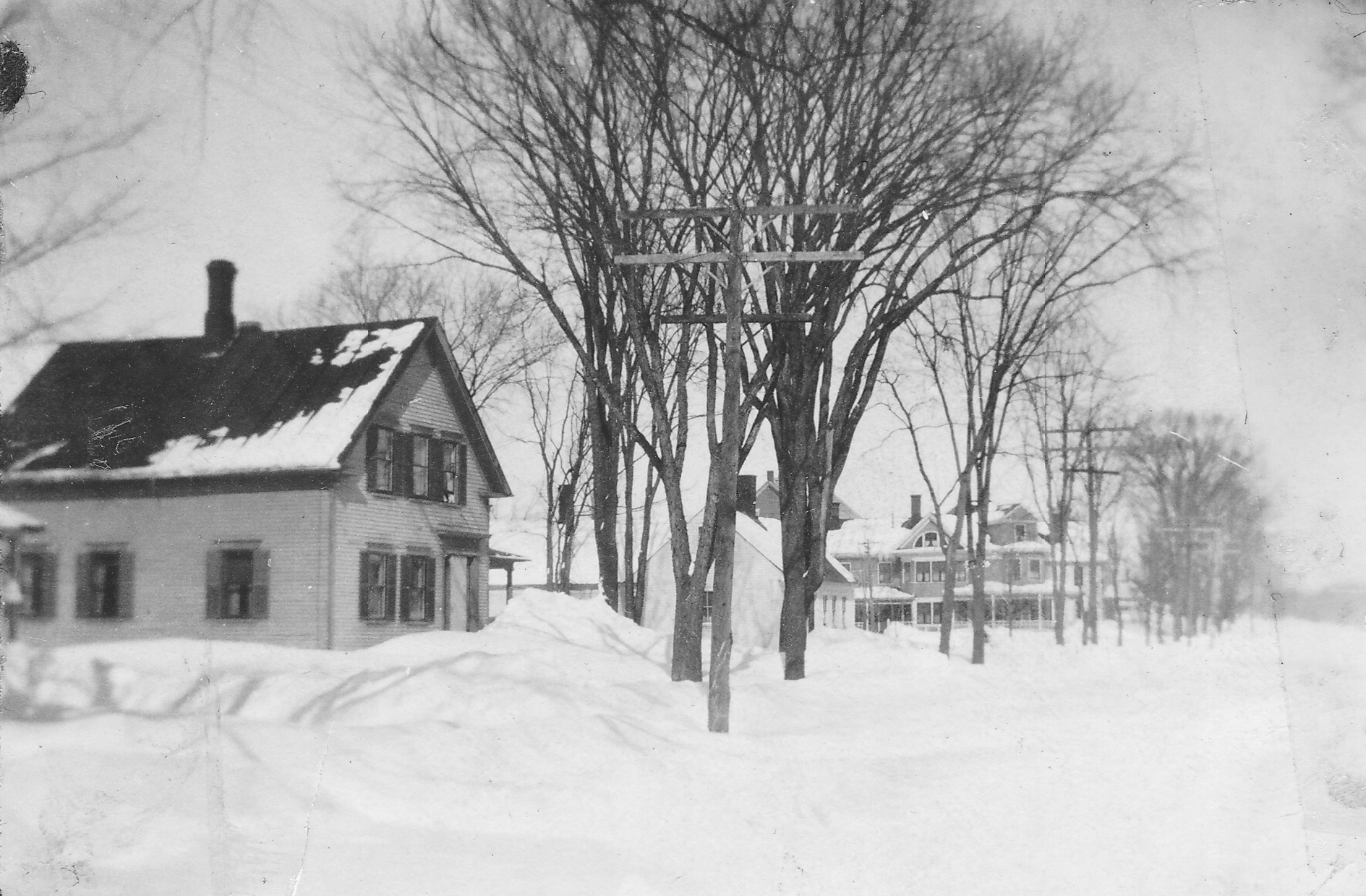
Looking up Academy Street with Thomas A. Linn’s former Blake Street Residence in background
*
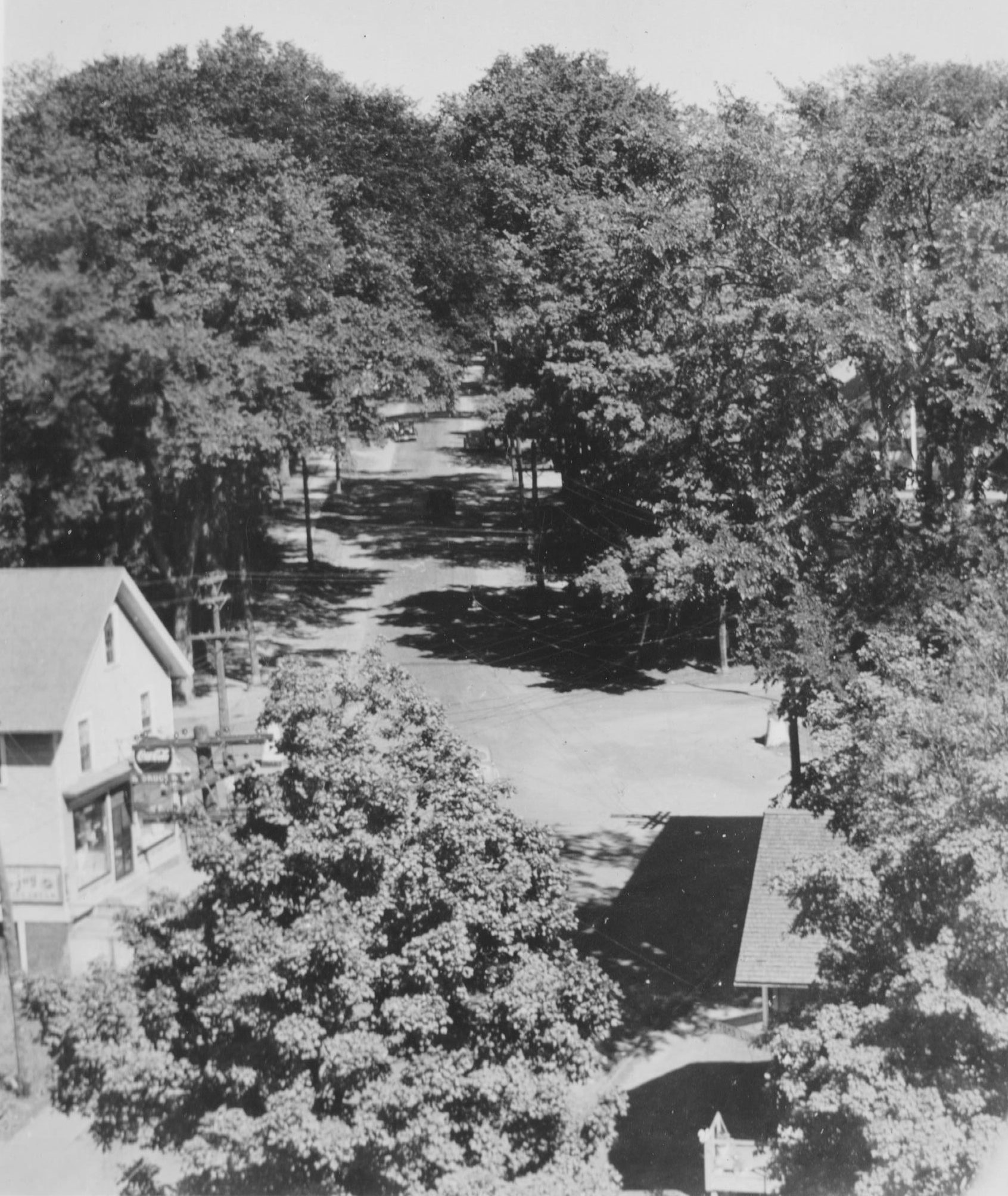
Elm trees and paved streets highlight this shaded view of Academy Street from the roof of Hartland Tanning Company – 1945
*
In 1970, Boy Scouts from across the state gathered on the hill behind the then Hartland Junior High School for the annual BSA Camporee.
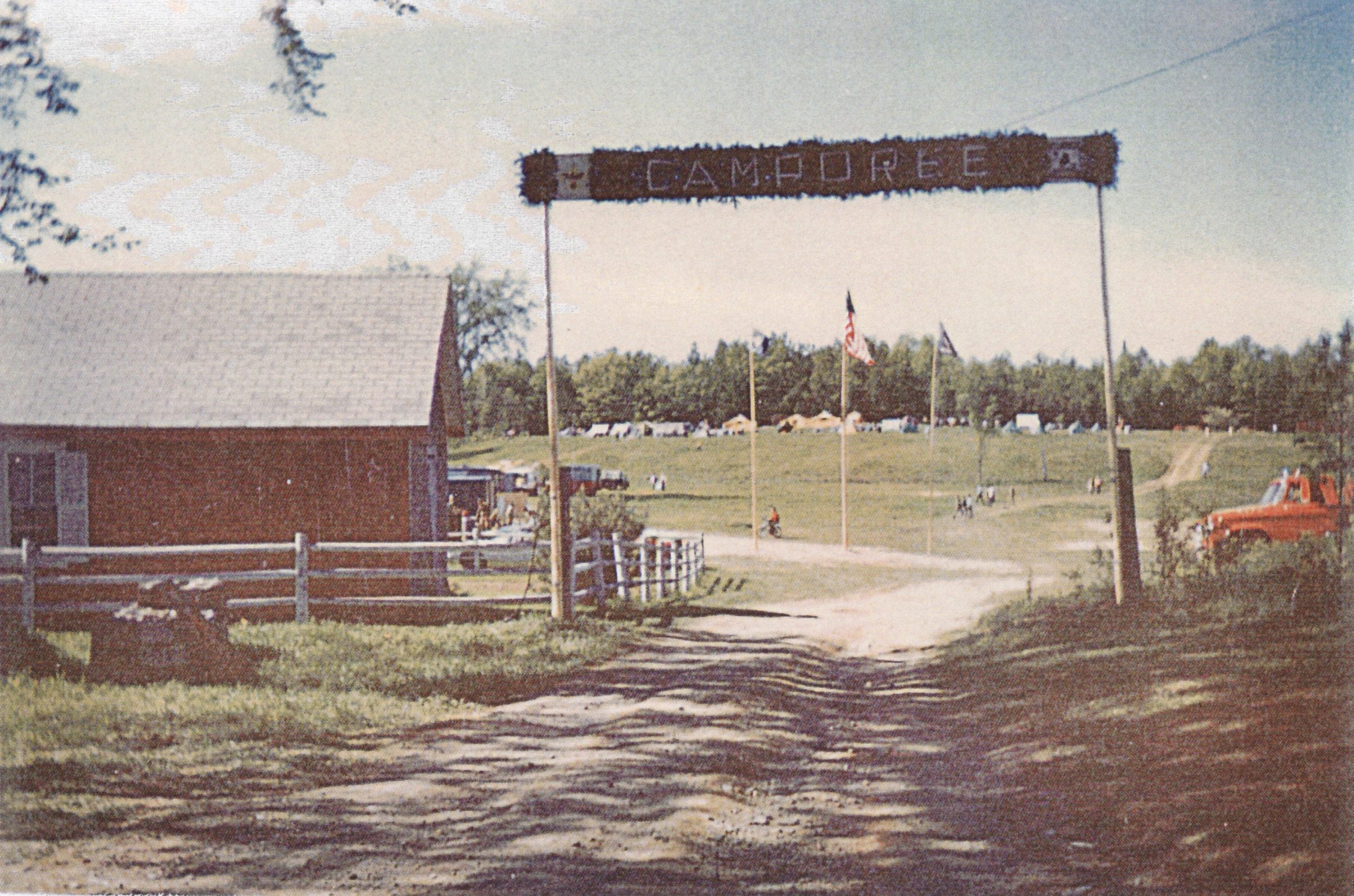
BSA Camporee Entrance at Hartland Junior High School – 1970
*
The BSA Camporee coincided with the Hartland Sesquicentennial Celebration and was commemorated with this patch.
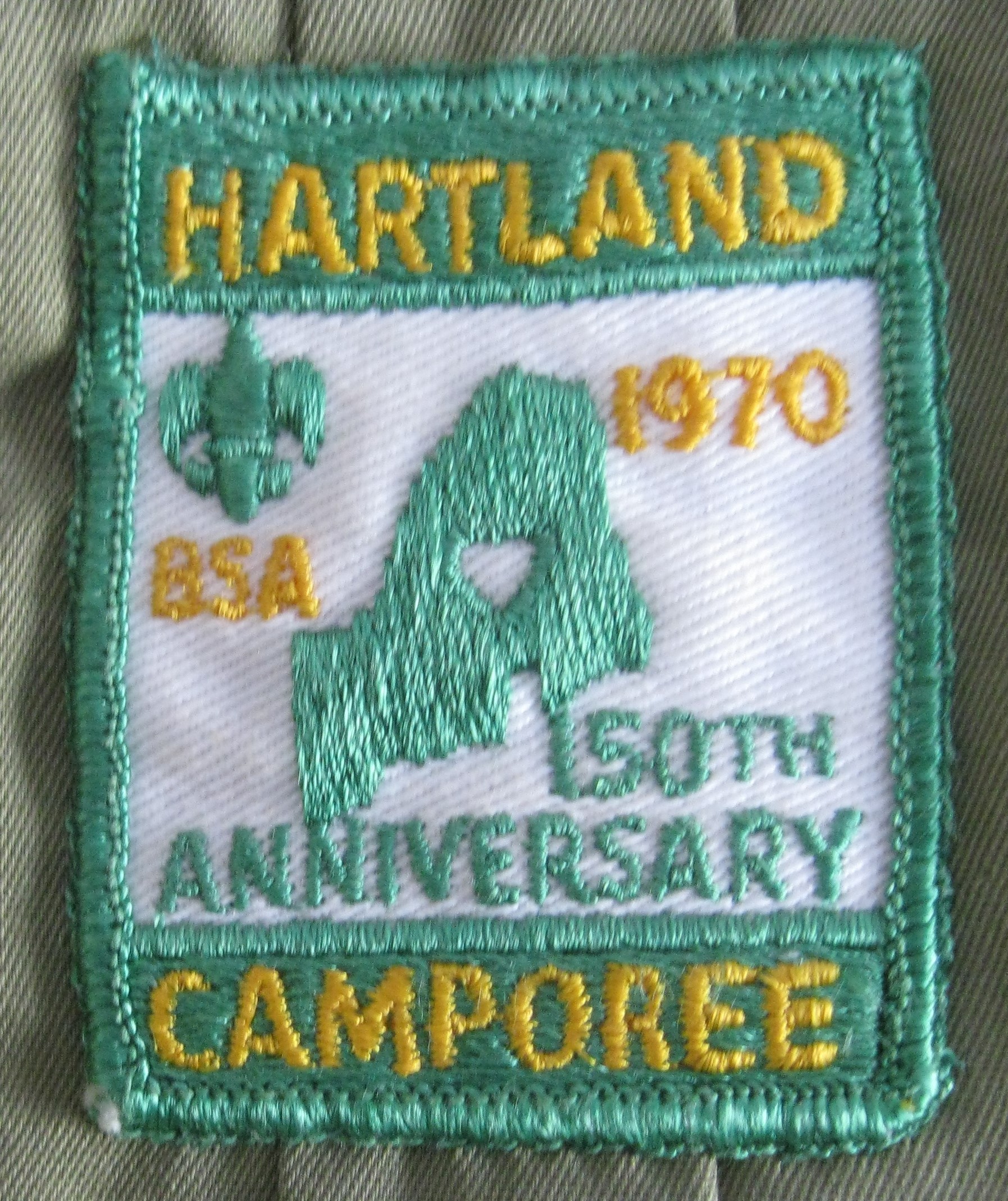
BSA Camporee Patch – 1970
(Photo courtesy of Jim Towle)
*
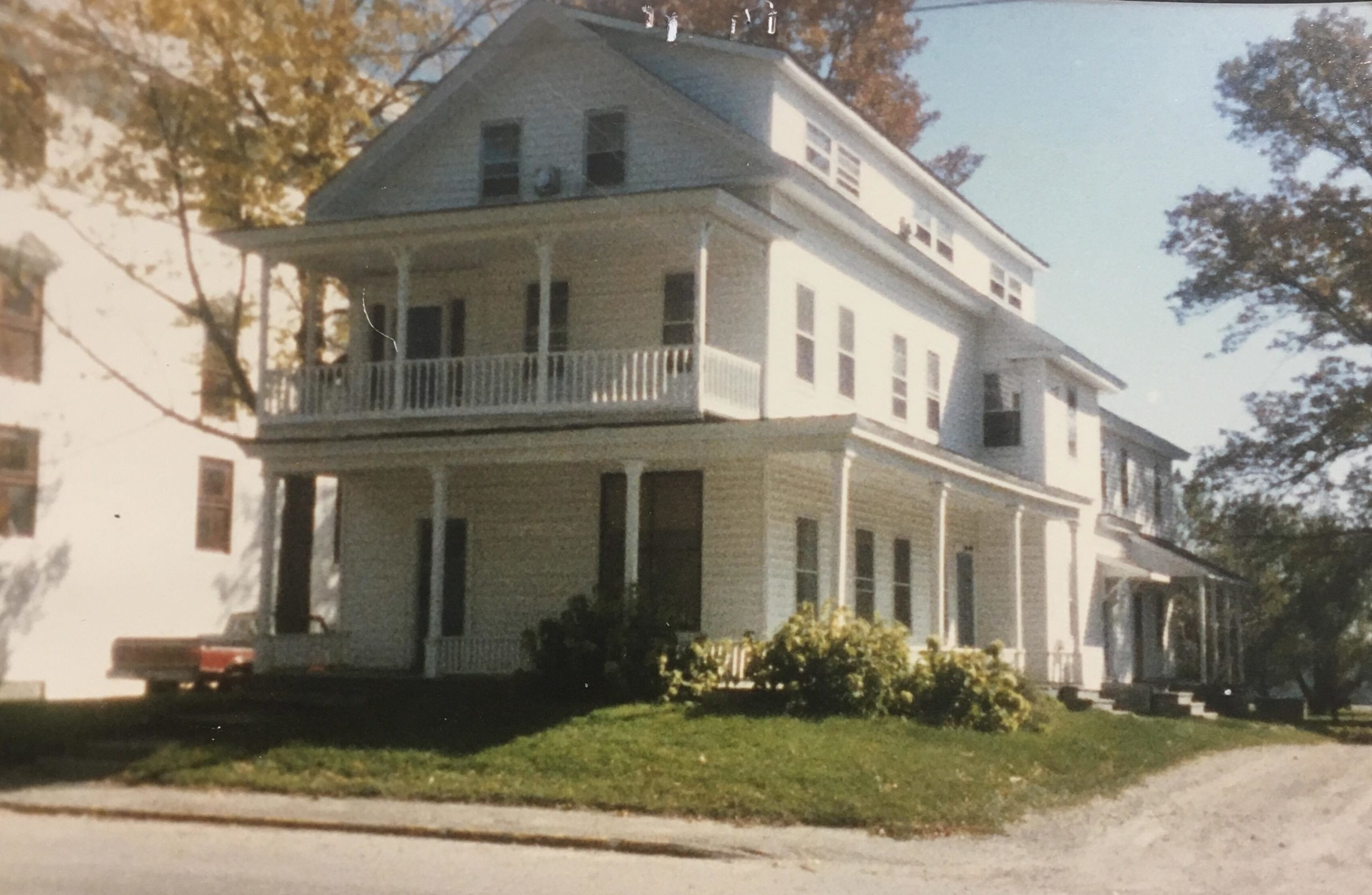
Former C. F. Pratt Residence & Store – 1987
*
The Hartland Town Hall & Opera House had deteriorated beyond saving without a very large financial investment by the town and was abandoned following the Town Office’s move to Elm Street. The historic building was sold to a private owner along with its small lot of land. In December of 2018, after some 125+ years of service to the community, the building was razed.
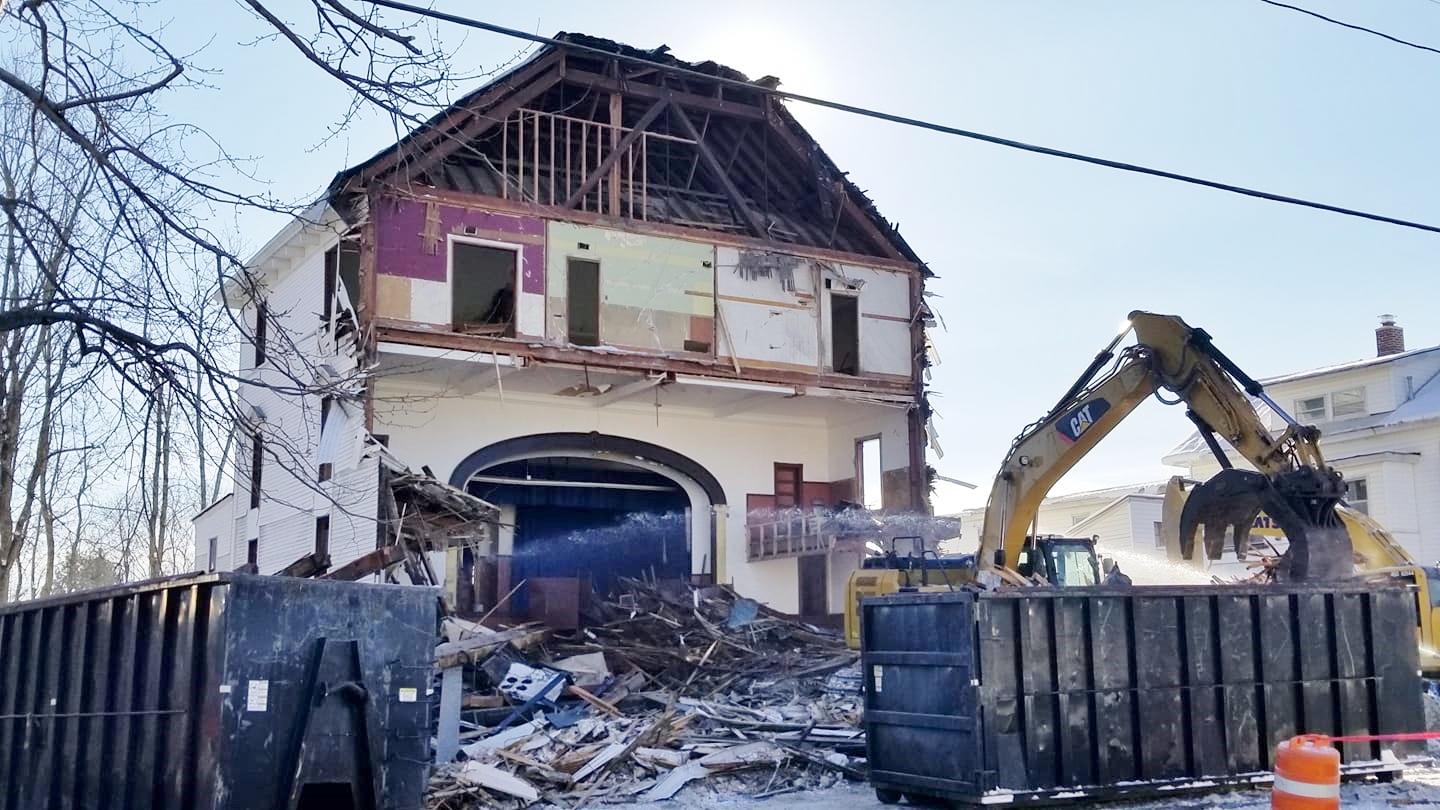
Demolition of Hartland Town Hall & Opera House – 2018